This page is a work in progress as photos are added to the web site.
(sorry for any missed names, will endeavour to correct ASAP)
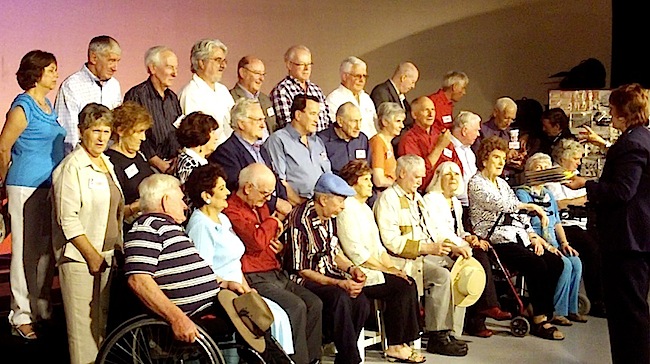
Group Photo: Year 1959 – Not all present as some were not aware and missed this opportunity
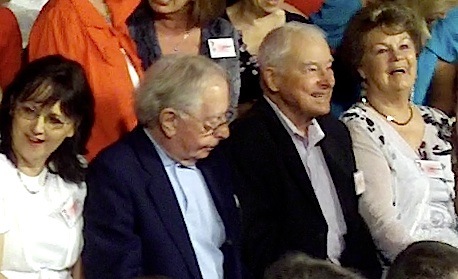
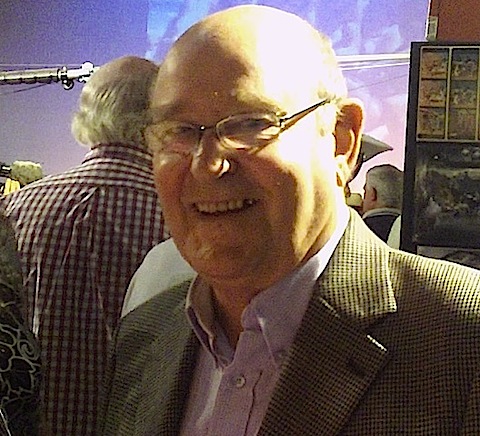
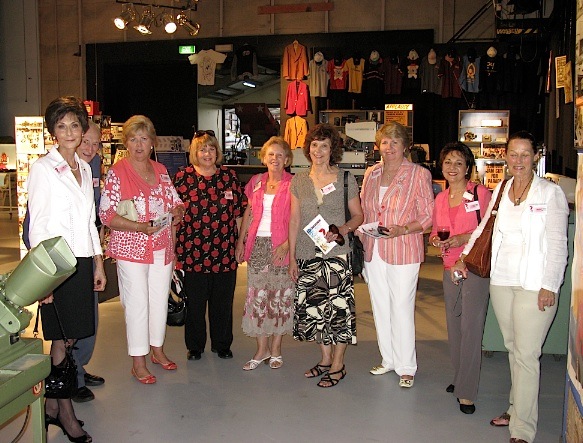
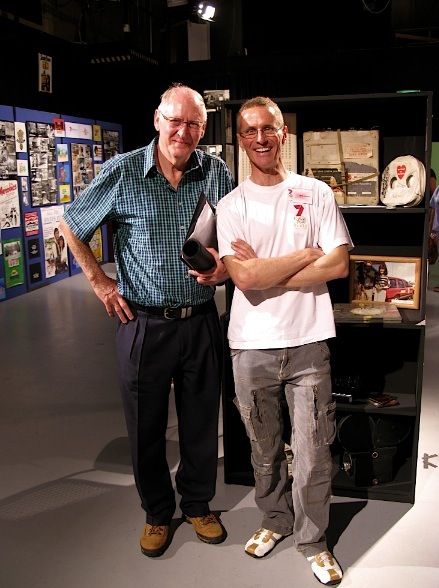
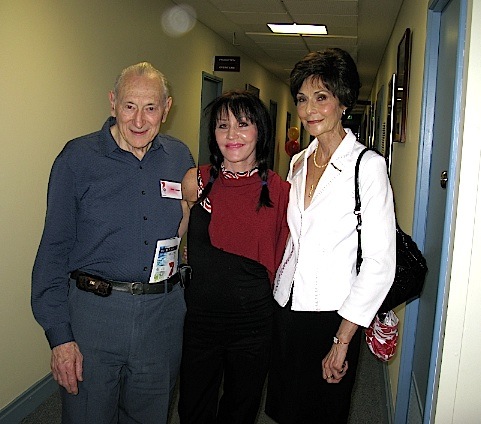
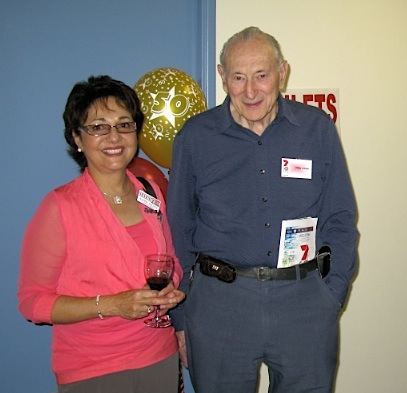
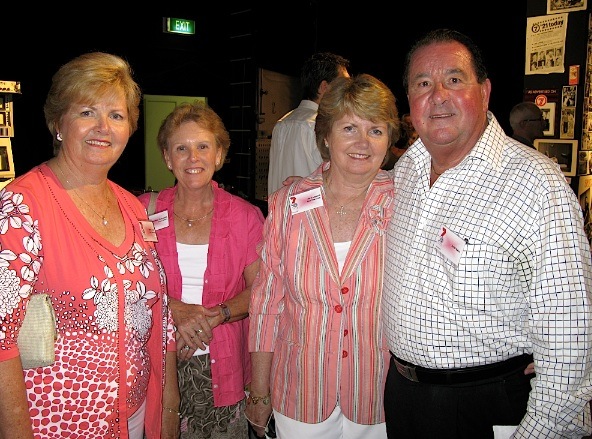
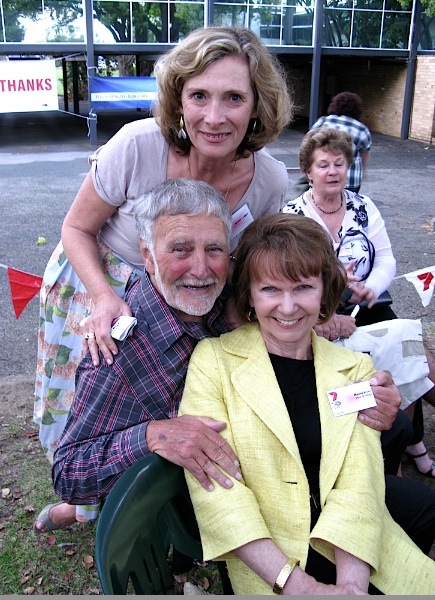
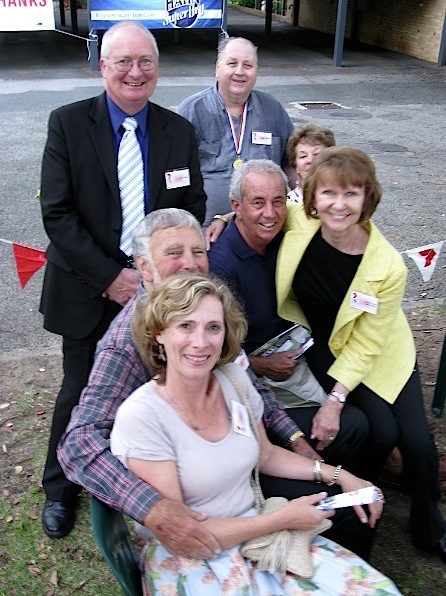
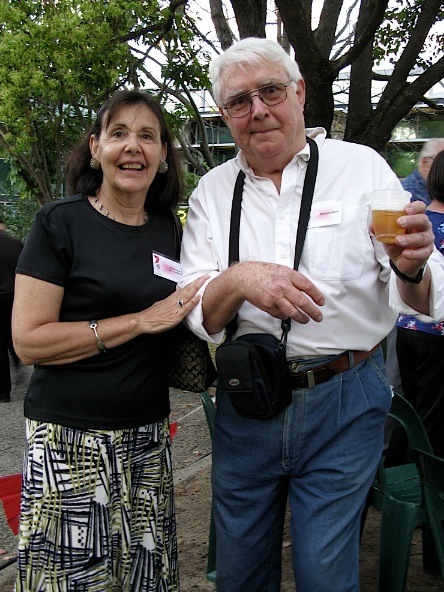
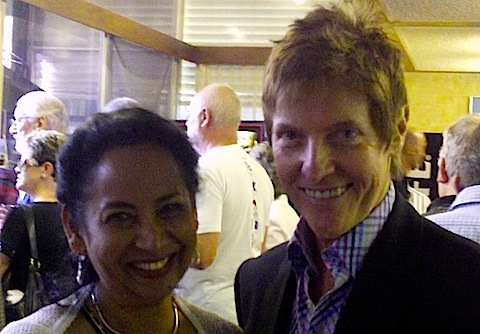
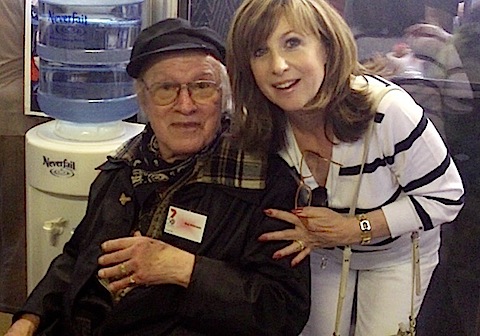
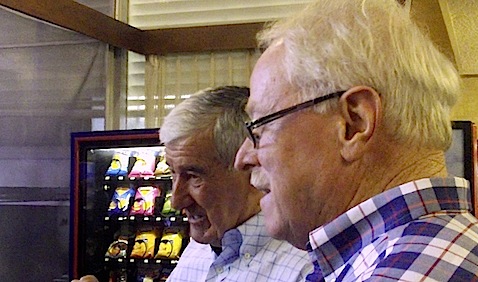
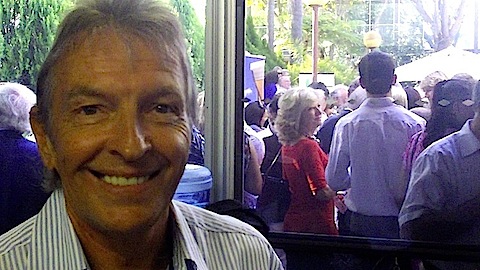
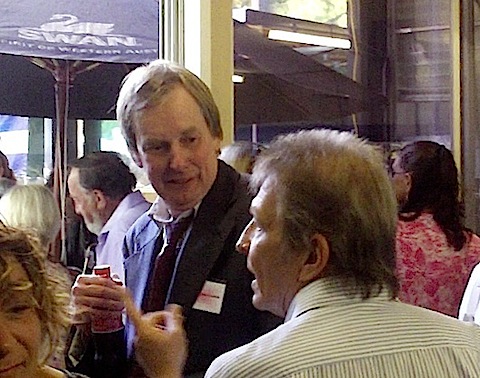
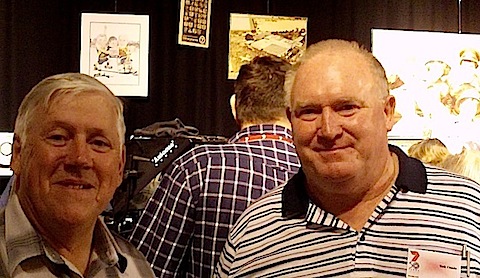
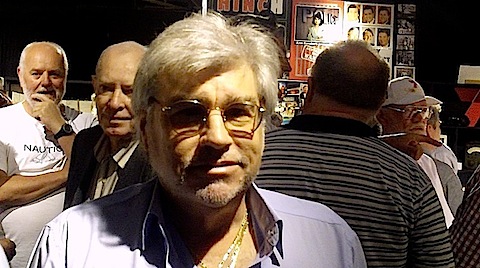
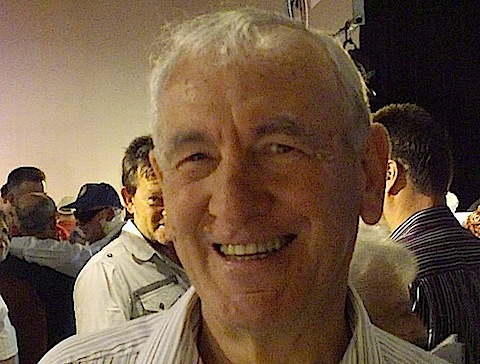
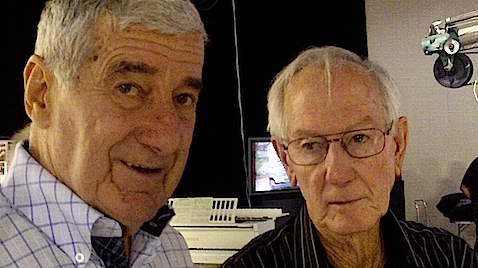
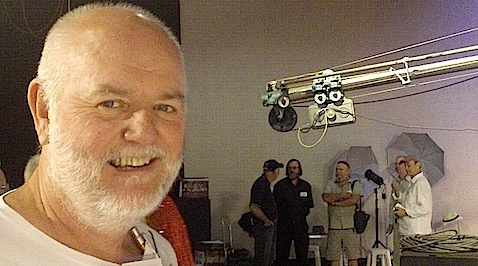
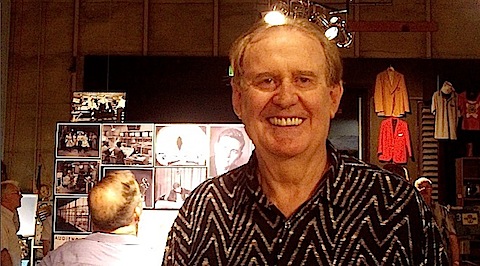
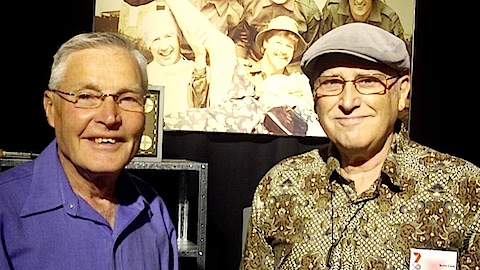
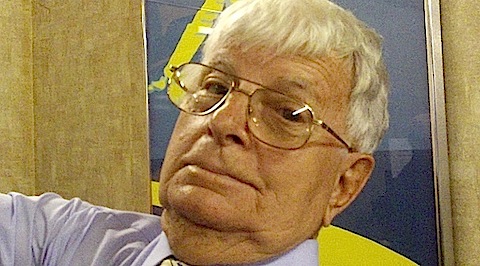
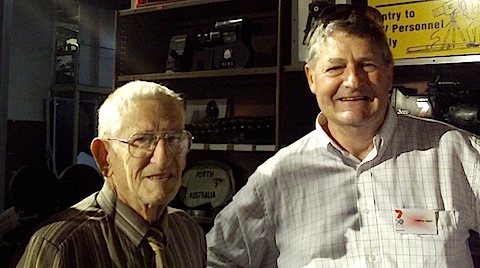
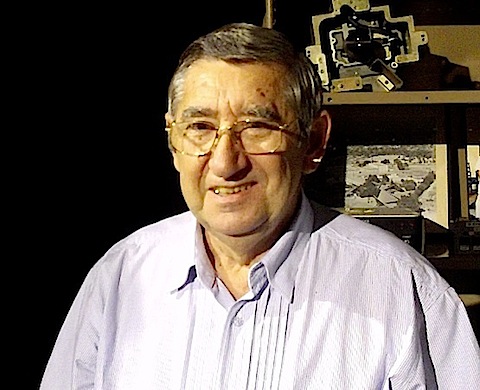
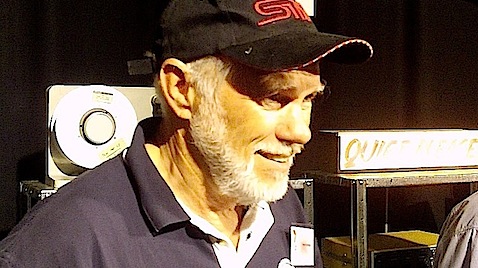
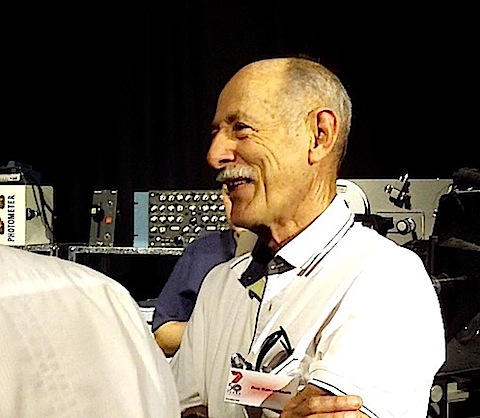
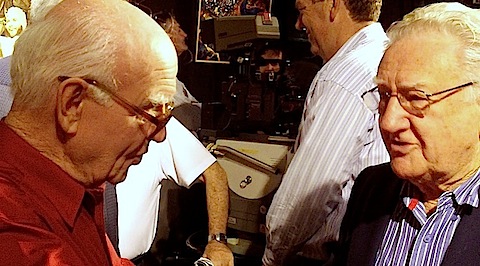





This page is a work in progress as photos are added to the web site.
(sorry for any missed names, will endeavour to correct ASAP)

Group Photo: Year 1959 – Not all present as some were not aware and missed this opportunity




























Naureen Taylor specialises in reunion photography and was present for the TVW Reunion (Sun October 18, 2009) at the historic Tuart Hill studios.
Group photos were taken according to decades worked at Seven.
The following photo was taken by Naureen of former TVW staff in 2006, at the AMMPT organised reunion of ABW2, TVW7 and STW9 folk, which was conducted at the Italian Club, to commemorate 50 years of television in Australia.
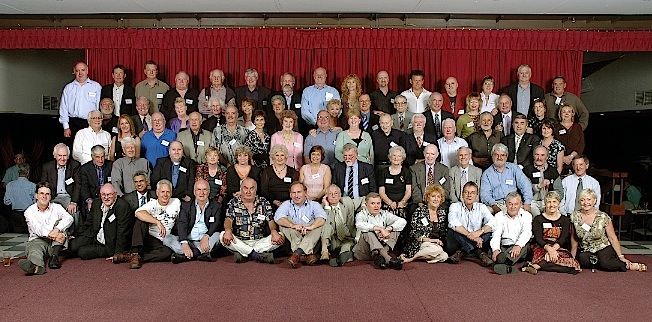
Please find below Naureen’s business contact details for those wishing to order photos taken at TVW’s 50th Anniversary Reunion (though most orders were taken on the day).

245 Erindale Road, Hamersley, 6022 Ph: 9247 3485 Fax: 9342 5049 Mob: 0413058 946
Email: reunion@naureensphotography.com.au Web site: www.naureensphotography.com.au
We have taken the liberty of reproducing below the contents of an email from Keith Bales to the TVW Reunion committee, TVW facilitating personnel, the print and electronic media, the Sponsors, the Entertainers and the many volunteer helpers who will make today’s reunion a memorable event for all attendees.
Few will know how tirelessly Keith has worked to arrange the sponsorship, First Aid contingencies and video recording of the event.
Keith has just recently announced that RUSSELL BROWN the Owner of Mintox Media www.mintoxmedia.com.au has agreed to come to the reunion and video record it, for later sale at a modest fee with The Reunion Logo on it.
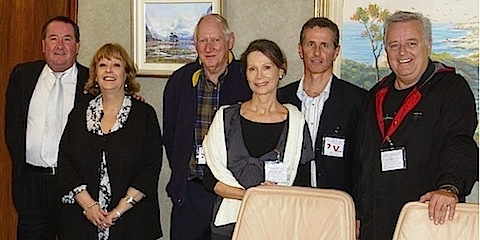
2009 – TVW 50th Anniversary Reunion Planning Committee
From:Keith Bales
Subject: MAKE EVERYONE’S DREAM- BEST WISHES TO ALL OF US FOT TODAY’S TVW 59TH REUNION
Date:18 October 2009 5:20:25 AM AWST
A Very Good morning everyone on The Team
The weather is wonderful, the birds are chirping and the day is here. Who thought eight months would come round so fast?
Thank you one and ALL for agreeing to be part of one of the biggest celebrations of these people’s (and our) lives today Sunday October 18 at TVW.
To ALL our performers, volunteers (with whom we could not without), our generous, kind and AMAZING sponsors, Lion Nathan/Haan/Swan, Olive Farm Wines, Nightcruiser Party Buses, Holiday Planet, Virgin Blue, Argonaut Web, Star-Gate Actor’s Academy, Foo King Hot chilli relish, chilli chocolates and chilli beer and schnaaps, Mrs Mac’s Pies, Johnny and The Strangers,Tudor House Banners and Mintox Video Productions,
The TVW canteen and operations Staff and everyone else that have helped us a BIG thank you. This includes our Friends and contacts in the media, worldwide.
Just a thought to remember please?
TODAY, like 7 has done for 50 Years, today, we will:
“Make everyone’s DREAM come true, BELIEVE in your people, your Guests, your partners,
DARE to make a difference, then just DO it!”
WALT DISNEY.
Best of luck and thank, you, again, for being part of this day, especially our small Committee, sponsors and those that, very early on, agreed to help us at no cost to make people’s dreams come true in the 7 grounds today. THANK YOU.
Warm and sincere regards
Keith
Keith Bales – On behalf of The TVW 50th Reunion Committee

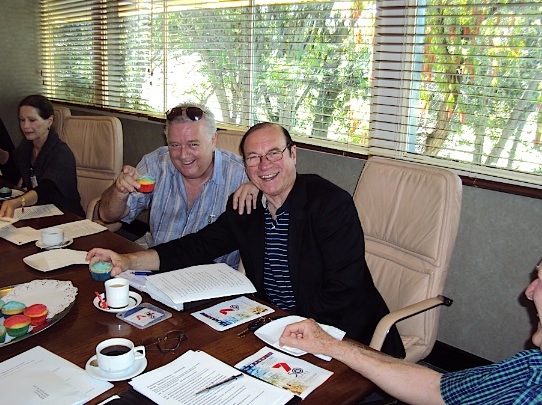
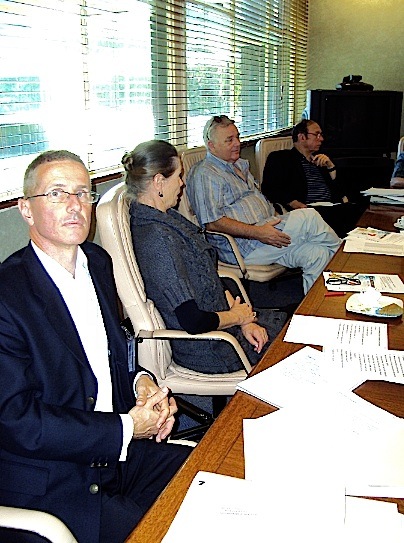
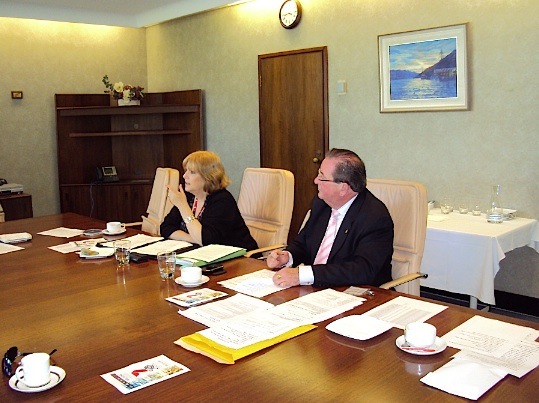
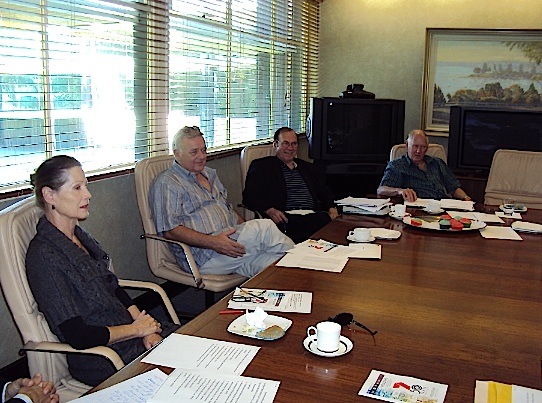
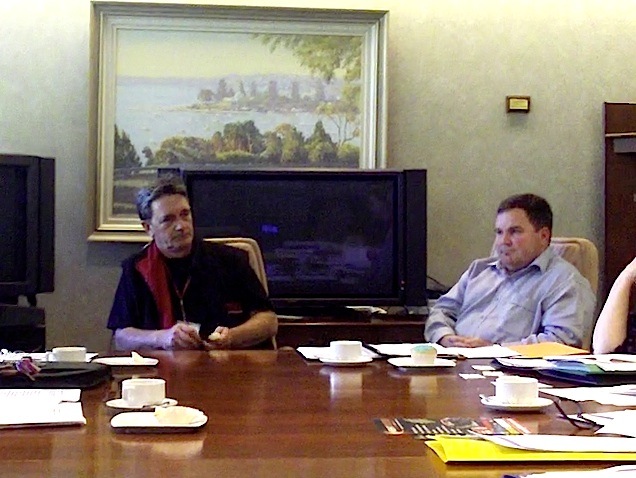
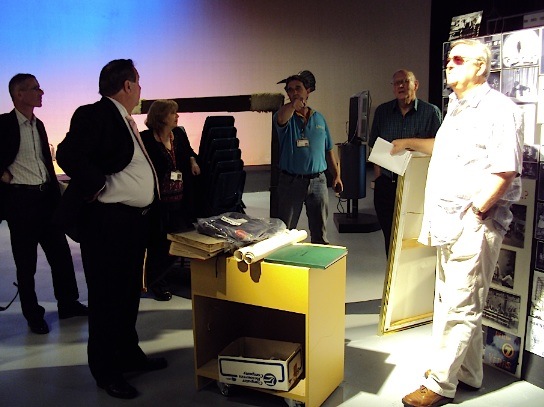
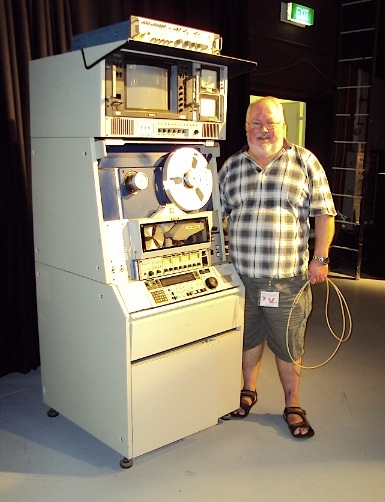
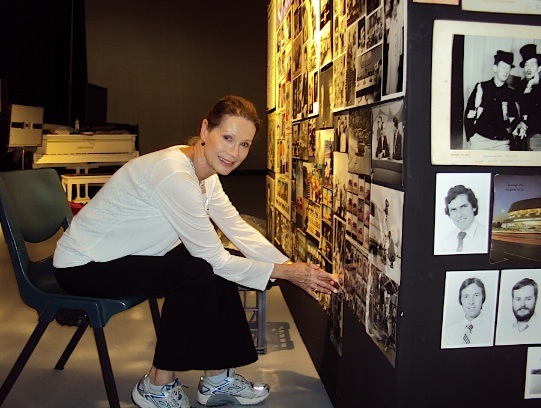
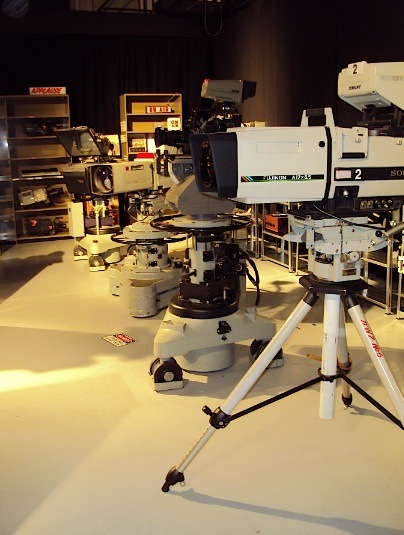
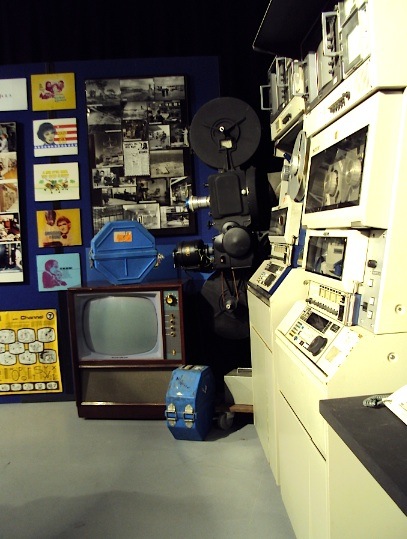
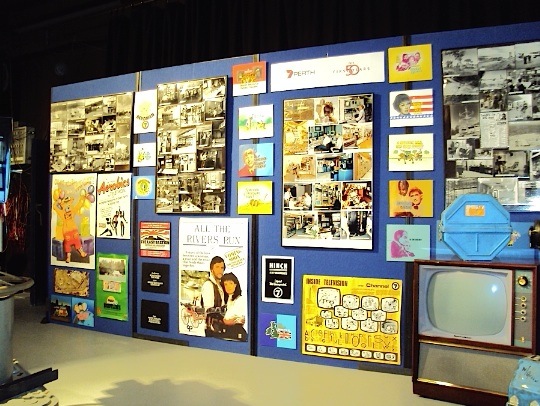
Channel Seven extended an invitation to all staff, former management, clients, VIPs and the TVW Reunion Committee to commemorate the golden anniversary of television in Western Australia.
The venue was Central Park in the heart of the city of Perth.
Guests walked the red carpet to a lavish cocktail party with a colourful floorshow and music provided by an Abba tribute band.
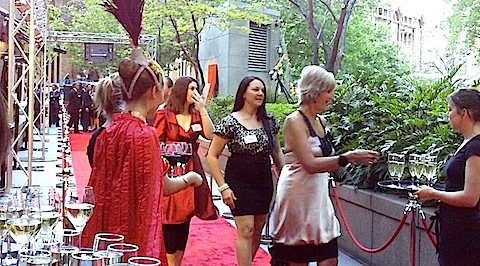
The master of ceremonies was Simon Reeve and speeches were given by TVW General Manager Ray Wardrop and Seven Network and WAN Chairman Kerry Stokes.
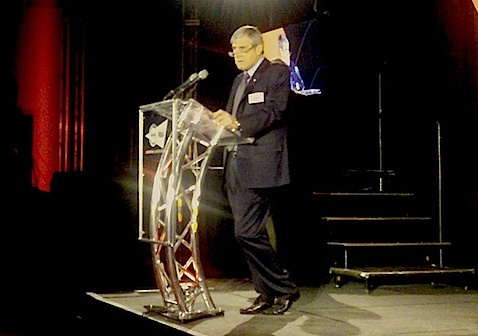
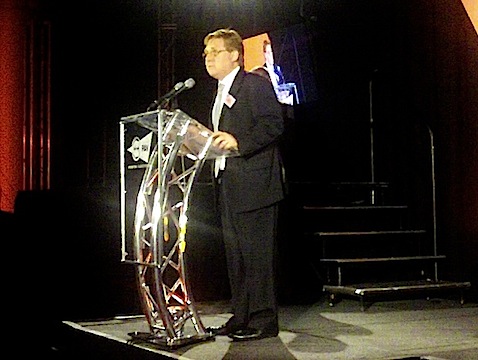
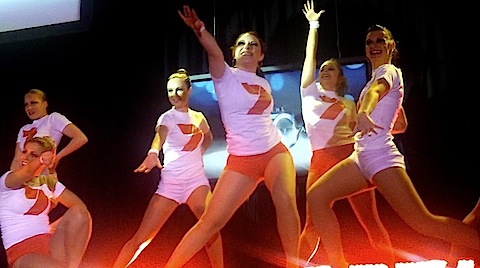
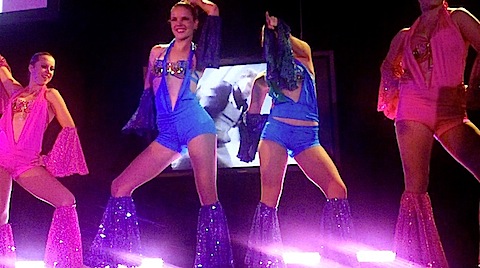
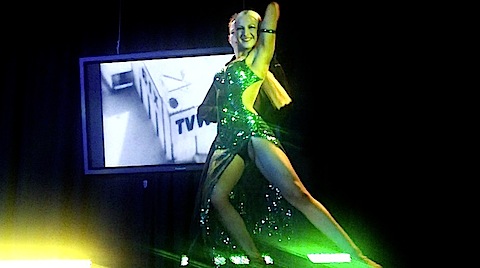
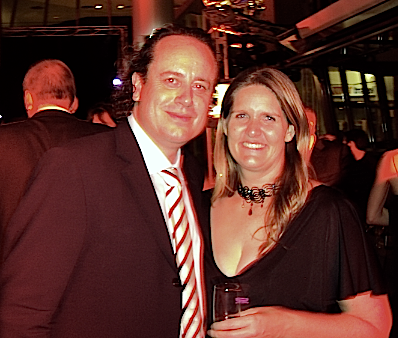
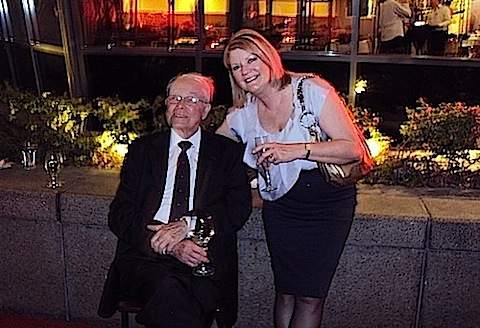
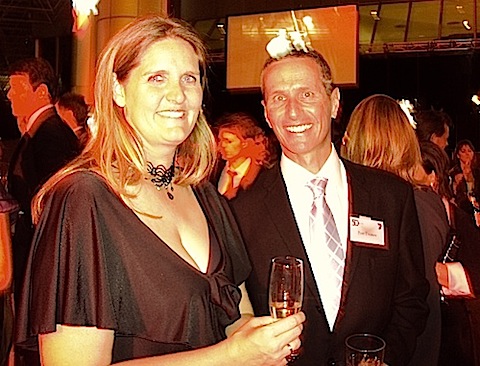
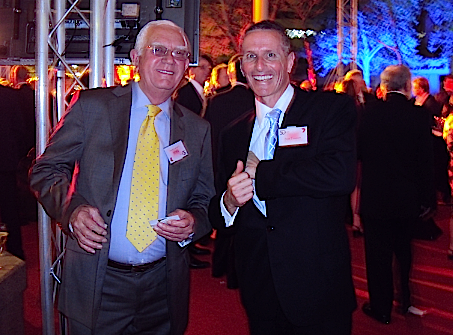
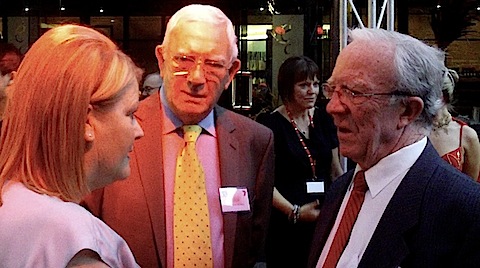
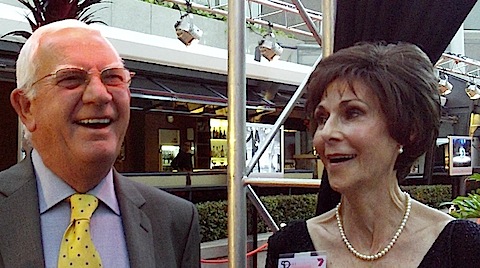
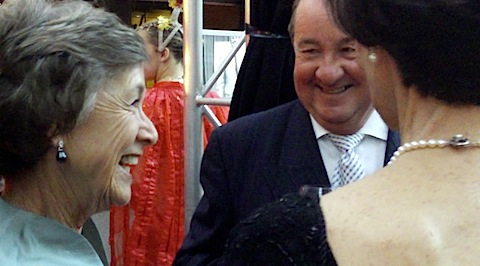
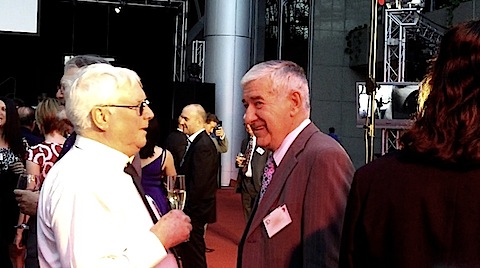
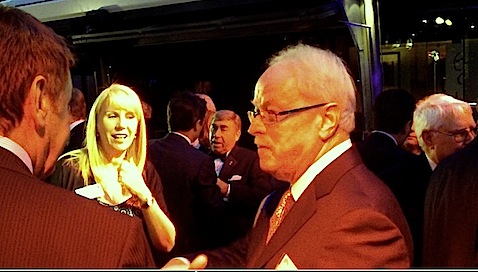
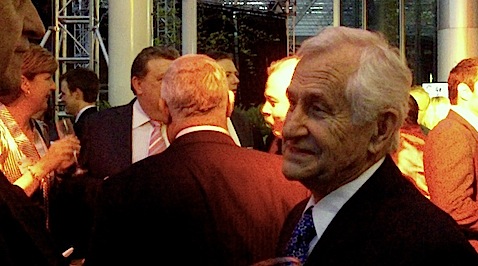
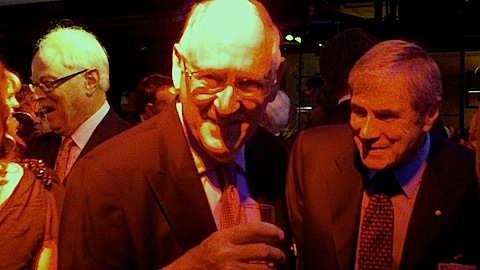
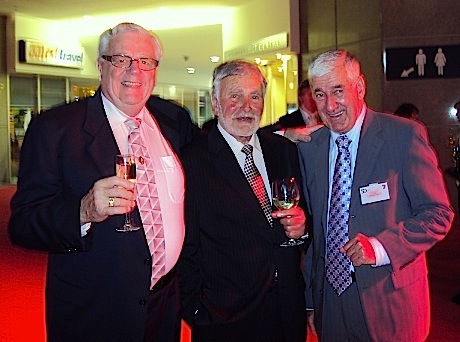
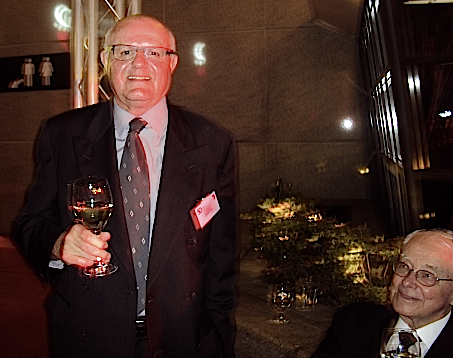
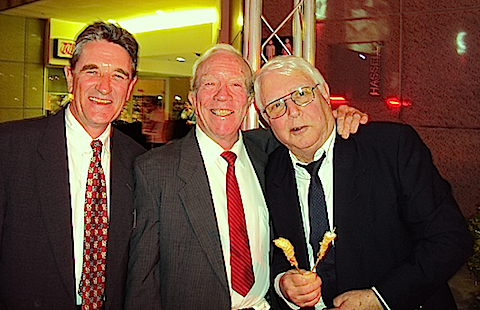
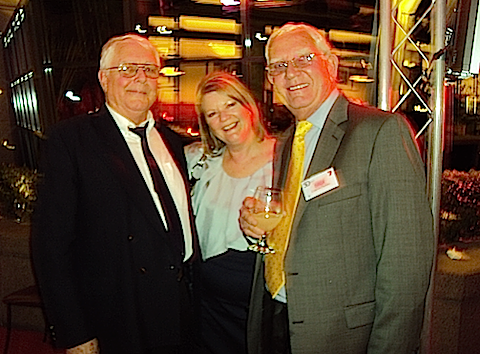
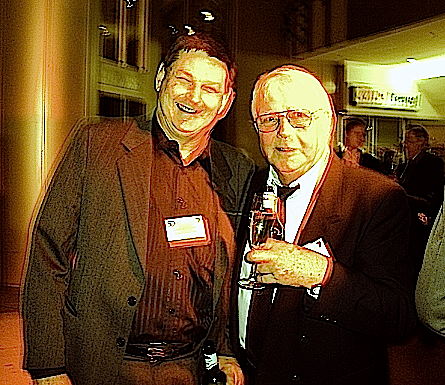
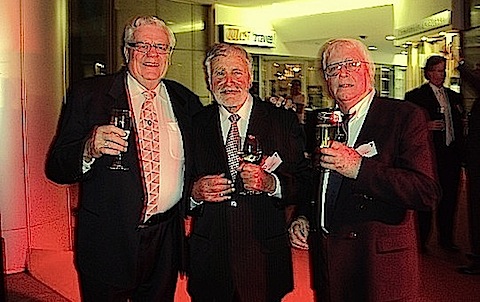
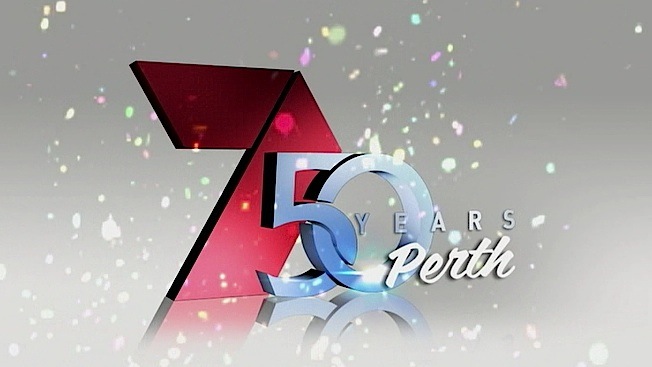
Please be watching TVW Channel 7 tonight at 8:30pm (Friday October 16th, 2009) for Seven’s 50th anniversary special titled “7 Perth The First 50 Years”.
This fast moving, informative and entertaining special will bring back many fond memories of TVW in the early years. It will also be an education for the younger viewers who did not experience a time when TVW was an independent company, dedicated to providing a local presence, broadcasting a wide range of live and recorded shows every day. Romper Room, Children’s Channel Seven, Stars of the Future, Today and Televisit aimed at women, News, current events, Viewpoint and Sports programs, with a variety of entertainment shows from Spotlight, Tuesday Date, Teen Beat, Club 7 Teen, Tonight on Seven, In Perth Tonight, Spellbound, and the many quiz shows such as Post Office, Letterbox and It’s Academic, Reach For The Stars, the big budget specials such as Invitation to the Dance, the Nutcracker and the Good Oil and many more. Not to forget the arena shows in the big tent or the Perth Entertainment Centre, the Christmas Pageant and Telethon. This trend continued as the decades passed, culminating in the internationally broadcast Bob Hope Down Under in 1978 and Miss Universe in 1979.
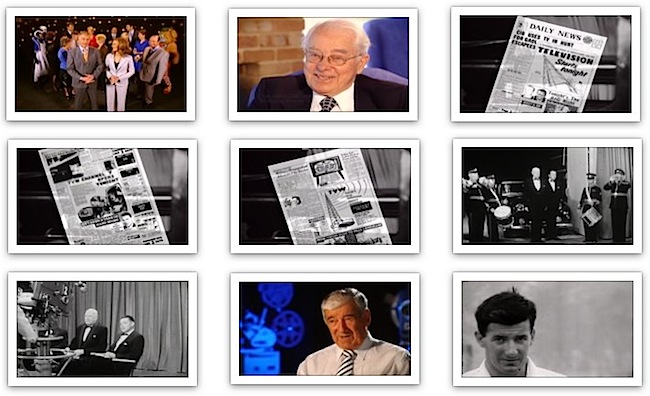
Sir James Cruthers espouses the philosophy first outlined by WA Newspaper Managing Editor James Edward Macartney. Darcy Farrell informs us of the world changing and headline gaining stories during his period as the inaugural News Editor.
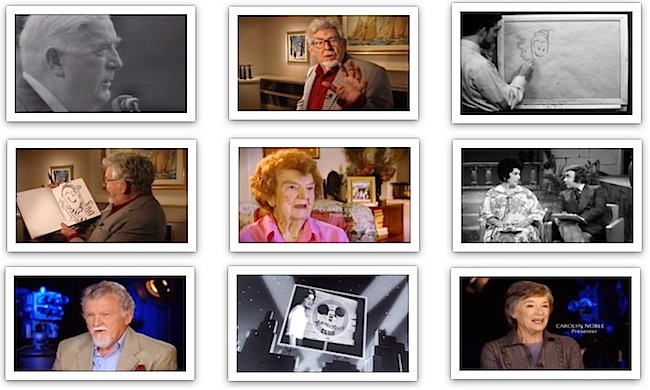
Rolf Harris, Coralie Condon, Brian Williams and Carolyn Noble were four TVW pioneers who made a big impact on the viewers, as either presenters or producers.
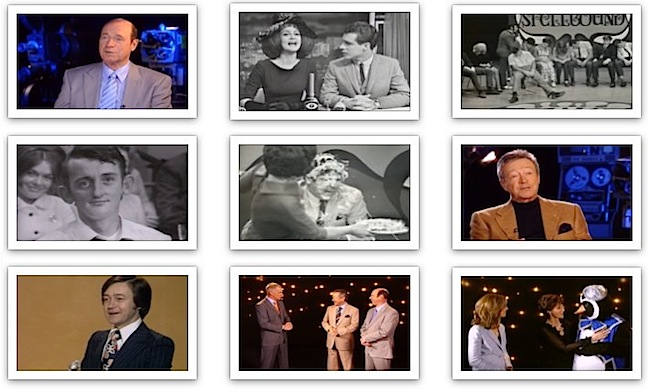
Gary Carvolth and Jeff Newman represent two very versatile presenters, involved with a wide range of programs and who applied their craft both in front and behind the cameras. Trina Brown was also very versatile. Firstly as a fondly remembered children’s hostess, Secondly pioneering Early Birds and thirdly as the first woman weather presenter in WA.
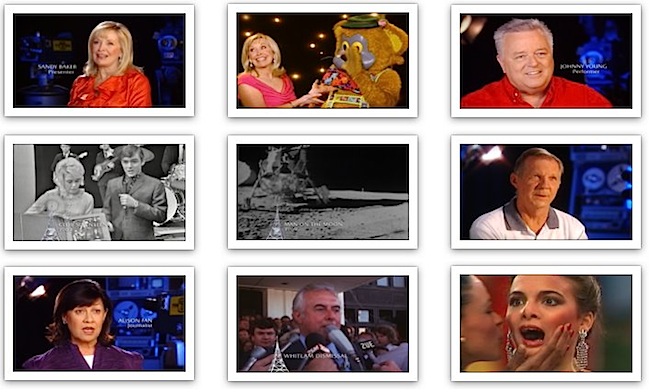
Sandy Baker, Johnny Young, Peter Waltham and Alison Fan enlighten us about the early and middle years.
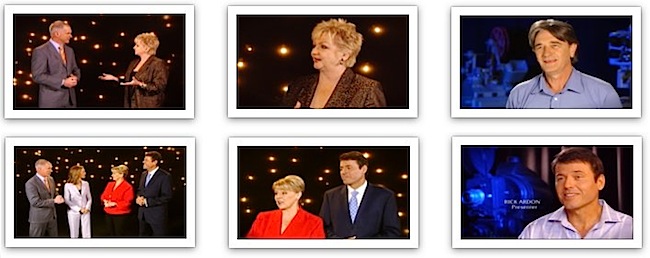
Simon Reeve, Yvette Mooney, Jenny Seaton, Keith Geary, Susannah Carr and Ric Ardon wrap up the final decades. The images here only give a small insight into the considerable content of this two hour special, astutely produced by Sadie Purser and most competently compiled by Brad Bergersen.
Page 10 of the October 2009 issue of The Senior News features an article by Annie Lee about our web page team.
This gives credit to the many former management and staff who have contributed photos and stories.
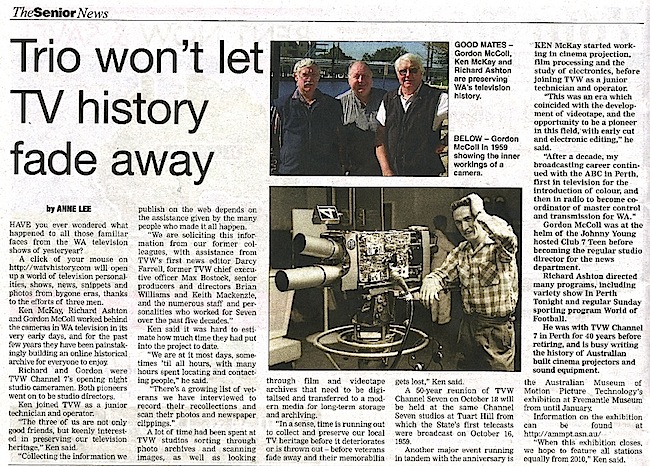
Throughout the past 8 months, we have also been in constant contact with TVW Promotions Manager Jill Glass and TVW Producer and COS Sadie Purser. Access to TVW’s photo archives has been invaluable, as has the continuous stream of unique photos taken by former staff.
The support of key people such as Darcy Farrell, who is a walking taking encyclopaedia on TVW’s glory days, has been most valued. Not only can Darcy recall names, places, events and times, with incredible ease, but he has kept a remarkable collection of TVW memorabilia in pristine condition, dating back to 1959.
The recording of events over the previous 5 decades would be much poorer if it were not for the photos, newspaper clippings and memories of the many people who lived it.
The support of Max Bostock, Kevin Campbell, Bill McKenzie and Greg Byrne has been most valued too, as we feel that it gives our project some credibility knowing that key TVW people approve.
Today’s Directors, starting out, don’t know how lucky they are with the modern “Tools” at their disposal.
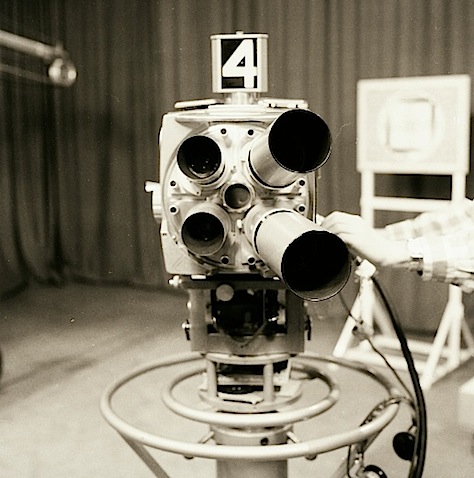
When I started Directing in 1967 the Black and White Cameras were equipped with a Turret of fixed focal length lenses with a selection of any 4 from the 2, 3, 5, 8 or 12 inch lenses available, and, maybe a small zoom lens with a ratio of 5-1 or 10-1. Turret Lenses were changed from one to the other by pressing a switch or, on earlier model Cameras, by turning a handle. 17 or 24 inch fixed lenses were available for OB’s with a selection of, by today’s standards, small range zoom lenses.
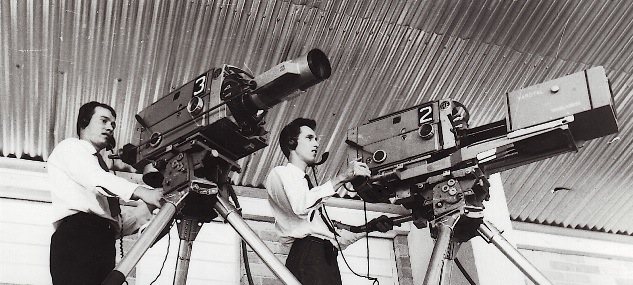
There was also a 2 man operated small Vinten Crane in the Studio which could go up higher than the Studio Pedestals.
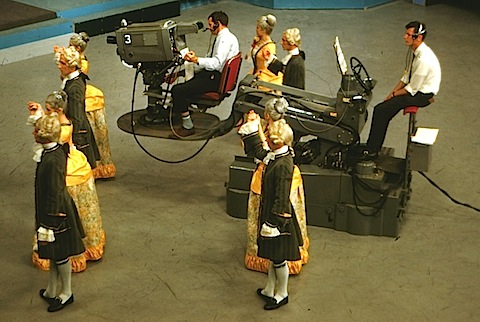
Some companies also had a 4 man operated Mole Richardson long base high arm Crane.
Hand Held and Radio TX Cameras hadn’t been developed in those days.
Cable runs also had a limited distance.
Today I’m spoilt for choice as I take my place in the Studio Control Room or OB van.
All the Lenses are Zooms, and, where, not so many years ago, on OB’s, my biggest zoom lens available was a 55-1. I now have the choice of 70-1’s, 86-1’s and even 101-1’s. Some of the very large lenses even have Image Stabilizers and Auto Focus systems built into them.
When I was Directing Cricket at TVW Channel 7 in the late 60’s and early 70’s, we only had 3 or 4 OB Cameras for a Match . Even at the BBC in 1983 we were still only using 5 Cameras for Cricket coverage. Today we use 25 Cameras or more. Most OB’s, in the early days, only had 4 Cameras available, except, perhaps, for Golf, where additional OB Vans were used, with additional Directors with their output linked back to the Main OB unit. Today, on major Sports and Concert OB’s, we use many many more. e.g. 40 Cameras for F1 Motor Racing, plus all the On-Board Cameras. For Golf around 60 Cameras are used, and, for the Winter Olympics Bobsleigh and Luge Host Broadcast coverage, I used 31 Cameras for a Downhill run that lasted around 60 secs. OB International Music Events often use around 25 Cameras. All these Cameras can now be Directed and Vision Mixed from one very large OB Unit, which, in those early days, was unimaginable.
Cameras can be as small as a matchbox to fit inside a Cricket Stump or on an F1 Racing car. We have Cameras in Helicopters and Blimps, on Motor Bikes and Golf Carts, Underwater Cameras and those buried in the Ice on a Bobsleigh Track. There are Pole-cams, which are miniature Cameras on long poles to get into places that a normal Hand Held Camera can’t get to. There are Cameras travelling at speed on Rails, Tracks and Wires, positioned on the ground, vertically or horizontally, or, overhead. All of these Cameras provide a “live” feed. They can also be fitted with “Fish Eye” lenses for very wide angles.
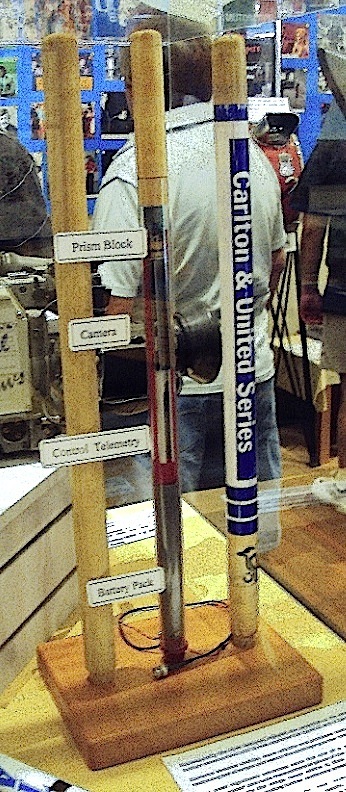
We have Steadicam mounts to create smooth walking shots.
On Motor Racing OB’s I’ve positioned Cameras mounted on Jib Cranes with a reach of over 20 meters, and, on Hoists that go up as high as 72 meters, not for the nervous Cameraman.
We have “Hot Head” Cameras that we can be put in dangerous positions with the Cameraman operating them remotely from a safe position. These remotely operated Cameras can also pan at very high speeds as with following an F1 Racing car.
Technology today allows you to put a Camera just about anywhere you want to, and, get a “live” feed, from it, it’s only limited by the inventiveness of the Director.
We have “Digital” linked Radio Hand Held Cameras that don’t even need “line of sight” to Transmit their signals back to the OB Truck.
We can use Helicopters or Fixed Wing Aircraft to Radio Link Cameras on the ground back to a Control Room a long way away, as used on the very impressive French OB coverage of the Tour De France.
We have Fibre Optic cables for the Cameras that can run for many kilometres, or, we can Radio Link the Cameras back to the main OB Truck. We don’t need a sub-mix OB Truck, with another Director, on large events, just because some of the Cameras are a long way away.
There are also the Satellite Links, either mounted on a Truck, or, assembled out of a suitcase. Signals can now be got out from anywhere. There are no hidden locations or black spots. No more Multi “line of sight” Link paths are needed across the country to feed Cameras to OB vans or OB vans to the TV Station.
We have Super Slow Motion and Ultra Slow Motion Cameras for High Definition Television, some of which can record, depending on the available light, at more than 1,000 fames per second to give sensational replays. Standard Cameras record at 25 frames per second, and normal Super-Slo Cameras at 75 frames per second. But, remember, if you replay a sequence recorded at 1,000 frames per second it will take rather a long time to replay the sequence. There is also a new system, the SprintCam V3 HD that can record at up to 2,000 frames per second, that’s a replay rate of 80 times slower than normal. At one time you couldn’t cut to a Super-Slo-Mo Camera “live” as you would see a vision lag and judder, so, they were always extra Cameras. That has been overcome, and now, all Super-Slo Cameras are cut to “live” as well as being recorded.
OB vans have gone from the small, rather cramped, 4 Camera trucks with a few Monochrome Monitors inside, and a 2 row/12 button Vision Mixing panel, in a vehicle often converted from, what looked like, an old bread van, to the modern, 17 metres long, triple expanding sides, very spacious and luxurious Semi-trailers. These monsters of the road can weigh anything up to 40 Tonnes, and have Production Monitor stacks inside consisting of well over 60 Screens, and, an enormous Vision Mixing panel and Digital Video Effects machine more at home in the Starship Enterprise.
I can remember when the first Colour OB units were built, the only Colour Production Monitors for the Director were those of the Transmission Monitor and a couple of Preview ones, all the others were Monochrome. I Directed many a Formula One Race with Black and White Camera Monitors trying to recognise all the different cars and the Drivers Helmets. Not just to separate all the Teams cars, but also to differentiate between the Teams individual Drivers. The Cameramen had the same problem, they had Colour Cameras, but, Black and White Viewfinders. Now, of course, all the Monitors for the Director, and the Viewfinders for the Cameramen, are in Colour, luxury by comparison.
And then there are the Fly-Away Units. If you are doing, say, a Cricket OB from Bangladesh or the West Indies, and there are no suitable large OB facilities available, no problem, you take a Fly-Away Unit with you. If you need 20 plus Cameras, 5x 6 Channel EVS Hard Disc Recorder/Replay machines, a very large 64 input Vision Mixer, plus a number of Graphics feeds, the usual Stump and Super Slo-Mo Cameras, Microphones, Commentary box and Talkback facilities etc, and, there are no suitable facilities there, no problem, you take a Fly-Away Unit. Everything is packed up in London in hundreds of Flight cases and shipped out to the location where it is all built on site in a couple of days. This is quite a common and normal operation these days.
Before VideoTape was developed there were no “live” replays for Sports OB’s. Then, at first, there were Videotape Replays where you had to stop recording and spool the Tape back to replay an incident. This took time and risked either not having the time to use it, or, the machine not being back in Record to cover the next part of the Event.
Next there was the Video Disc, first used by BBC TV for Sport, and based in London. The term “Action Replay” evolved.
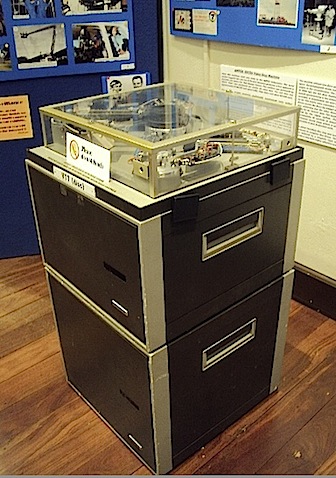
This Video Disc could only record 36 secs of Video on a continuous basis, but, could replay at the same time as it was recording. Remember though, that it couldn’t store very much as you can today, so, if you recorded over that 36 secs you would lose everything recorded before. If you wanted to keep something, say for the end of a Cricket Over, then you had to dodge around that sequence, not an easy task and rather nerve racking.
This machine couldn’t travel so it had to be operated in London at Television Centre. It was either Radio linked to the OB and inserted to air on the OB Vision Mixer, or, depending where the OB was, it had to be cut into the coverage in London. A tricky operation at the time.
It was not a very popular job to be rostered onto The Video Disc operation and probably be screamed at a lot over Talkback by the OB Producer/Director.
Today we have a multitude of Hard Disc recorders, many with up to 8 Channels on each. For instance, on Motor Racing, apart from the “Live” cut, we also Record all of the Cameras around the Track, all of the time, together with those Cameras in the Pits, and fixed on the Cars and in the Helicopter, so that, hopefully, we won’t miss anything important and can therefore Replay the incident, sometimes from multiple angles, while still continuously recording the Cameras outputs. We can also assemble packages and highlights as we go along. Cricket coverage, like most Sports, relies on multiple angles being ISO recorded and then replayed.
Major Music OB’s also ISO record all Cameras for later Post Production.
The latest Technology in Graphics and Television Camera Replays now has a vital part in assisting Match Officials in making decisions on Play, e.g. Line calls in Tennis, Stumpings and Run Outs in Cricket. The 3rd Cricket Umpire has a direct 2 way Talk Back Communication system to confer with the TV Director for Replays and decisions.
With Hard Disc Recorders we can “Time Shift” coverage by as little as a few seconds, or by more than an hour. The short Time Shift is useful if a Presentation or Interview, that we have no control over, starts when we are on a Commercial break or running another Videotape piece. We simply join it when we are ready and just Transmit the sequence a little behind “Live”
We’ve also progressed from hand made or plastic lettering Graphics to very sophisticated and impressive Computer driven designs, animations and statistical information that, on Sports OB’s, are now just taken for granted.
We’ve gone from 405 lines Black and White to 625 lines Colour, from Analogue to Digital, from 4×3 ratio to 16×9, to High Definition, and now, 3D Television is here with many TV Stations around the World offering specialist 3D Channels with Live coverage of Sport, Music and Events. 3D TV hasn’t worked and has been replaced with Ultra High Definition in 4K and 8K.
Yes, we’ve come a very long way from those Fixed Lenses and Black and White Cameras.
In early 1958 came the big break David Farr had been hoping for. Radio 6PM conducted auditions for an announcer, for which he applied and won the position. He was appointed to the evening shift, which in the pre-television era was radio’s prime time slot. Other duties included a couple of hours per day writing copy for commercials. A lot of the evening schedule consisted of recorded dramas, soaps, comedies and quiz shows interspersed with music programmes. Some of David’s music slots included The Top 30 Tunes, Among My Souvenirs and The Hillbilly Hour, complete with sound effects and vocal Yahoos!!! In those days audio tape was a relatively new innovation and studio recordings were made on wire recorders or straight to disc. Twelve inch 78 rpm records were still being used with single-use steel needles having to be changed after each play. Dramas, soaps and feature national programmes like Bob Dyer’s Pick-a-Box were all received on large 20 inch discs which were played at 33 rpm with the needle starting from the disc’s centre and moving outwards.
They were fun days, but television was looming on the horizon. It had been introduced on the east coast of Australia in 1956 and in 1959 TVW Channel 7 was awarded WA’s first tv licence. David’s sister, Janet, had secured a position as secretary to the Programme Manager.
In the latter part of 1959 they called for auditions for the positions of 3 announcers. David auditioned and was the first of the 3 to be appointed. He joined the TVW staff in September. The following newspaper reports ensued :
ANNOUNCER
A 22 year-old radio announcer who has never seen television is Western Australia’s first TV announcer. TVW Channel 7 programme manager Lloyd Lawson announced last night that David Farr, an announcer with 6PM-AM, had been appointed to TVW. His appointment was the first to be made following auditions last week. Two more appointments will be made later.
FIRST ON-SCREEN APPOINTMENT
First TVW appointment of their on-screen staff is former radio announcer David Farr. He will be one of TVW’s newscasters and announcers. Other applicants for announcer’s jobs were still being interviewed this week.
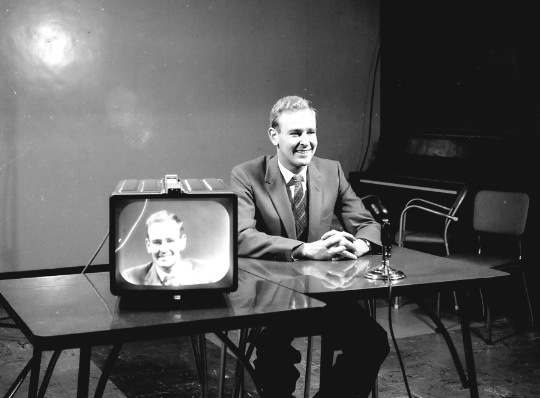
FAMILIAR FACES SOON
Two men whose faces will soon become among the best-known in Western Australia are TVW Channel 7’s announcers, Geoff Walker and David Farr.
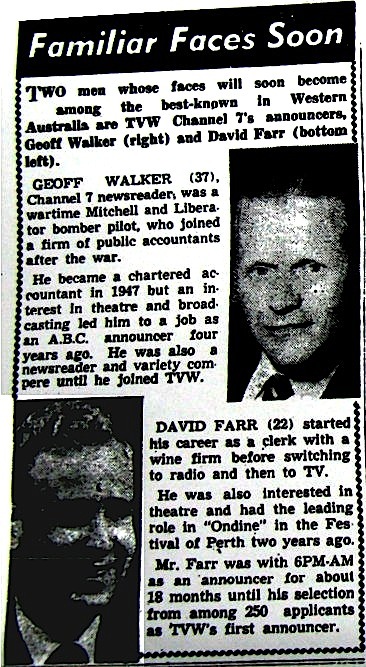
David Farr (22) started his career as a clerk with a wine firm before switching to radio and then to TV. He was also interested in theatre and had the leading role in “Ondine” in the Festival of Perth two years ago.
Mr. Farr was with 6PM-AM as an announcer for about 18 months until his selection from among 250 applicants as TVW’s first announcer.
From the Australian Women’s Weekly.
David Farr, aged 22, of Salter Point, WA, was the first news reader-announcer chosen for the TVW 7 staff. This picture shows David, his televised picture, and the camera recording a documentary film.
MAN ON A TIGHTROPE
For the first few days of TVW’s auditions David Farr was a man on a tightrope. At the time he was trying to decide whether to accept a radio announcing job offered to him or gamble on getting into TV.
After his first audition he thought the odds had lengthened – he felt “very nervous” when he first stepped before the cameras. Only 22, Bachelor Farr had only 18 months of announcing experience with 6PM when chosen by TVW. Other helpful experience includes copy-writing and amateur acting. David says his first job was invaluable. It taught him the value of a smile and pleasant personality – both vital before a camera.
David has appeared in two Festival of Perth productions – he played the lead in Ondine last year.
Incidental intelligence : “Moderately good” sportsman with a fondness for swimming. His birthplace is Narrogin.
TVW was to commence official transmission on the opening night of October 16, 1959. But before this were weeks of rehearsals and installation of equipment, training of technical and studio crew, many of whom had no industry knowledge. The journalists, most of whom had experience in print only, had to be trained in the new medium. It was a fun time. Test transmissions were being made and the first locally produced news bulletin was telecast. This press report in part :
TV NEWSREELS ON NEXT WEEK
TVW Channel 7 will present world newsreels during trade transmissions next week. News editor Darcy Farrell said last night that newsreels would be flown in by the CBS-ITN world service.
The half-hour service would start with a news bulletin read by David Farr and then would go into a world newsreel cover.
By this stage all the on-air staff had been appointed. In addition to David the other announcers were Geoff Walker from the ABC and Phillip Edgley of the famous Edgley theatrical entrepeneur family. Rolf Harris was appointed to head the children’s programming.
In those early days videotape had not been invented so all locally produced programming was “live”. Any necessary pre-recording was done on film which was a costly and non-instantaneous method.
The Channel’s opening night on October 16, 1959 went off without a hitch and was an outstanding success with whole families wrapped in rugs crowding the footpaths in front of electrical retailer’s windows, watching this wonderful new medium.
The on-air staff had to be extremely versatile, as David’s workload testifies. He was involved in general announcing, news reading, weather presenter, commercials, women’s afternoon host, teenage programme, quiz show compere, variety show compere and children’s show.
The channel’s first effort at a live programme series other than news and children’s show was an afternoon women’s show, Televisit. It was co-compered by Joan Wilson and David. These press reports in part :
TV STEP
West Australian television took another step yesterday when TVW7 started its first afternoon women’s session. Here, behind the screen on Televisit are announcer David Farr and hostess Mrs. Joan Wilson reading letters from viewers.
Televisit showed signs that it should develop into a good live programme. Hostess Joan Wilson and announcer David Farr did a promising job but the show’s live sections seemed burdened with a heavy load of commercials.
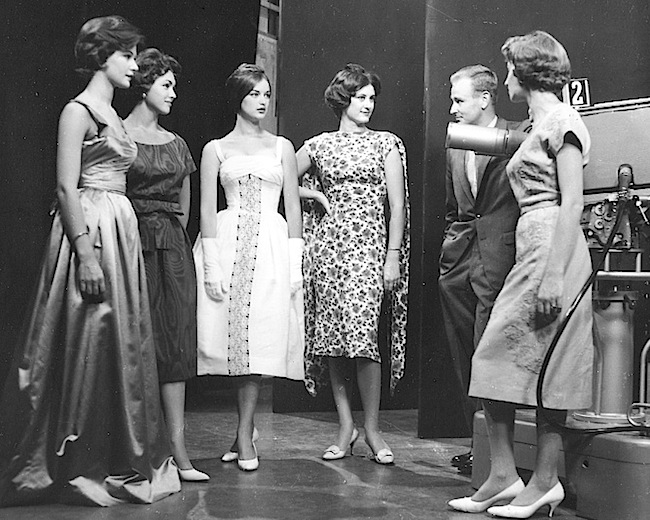
TELEVISIT HAS FAULTS – BUT SHOWS PROMISE
Televisit, TVW Channel 7’s women’s session, screened for the first time yesterday afternoon, revealed two promising TV personalities in hostess Joan Wilson and announcer David Farr.
David Farr (22) added a lot to the show with his good looks and easy, confident manner.
And then the company decided to launch a show for teenagers. These press reports in part :
TVW7 WILL START NEW SHOW SOON
TVW Channel 7 is planning a new live show for teenagers. It is scheduled to start later this month. It will be a late Saturday afternoon show compered by David Farr. Teenagers will dance, probably rock-n-roll, to music by a local group and latest record releases.
Last Saturday station executives watched a “dry run” of the proposed show. It is now to go into production.
TEENAGERS
TVW’s new Saturday teenage show is to be called “Rock at Five Fifty”. This gives it a ten minute advantage in time and title over the ABC’s Sydney tele-recorded show “Six O’Clock Rock”.
David Farr will compere and Brian Williams will produce and direct. The show’s format is simple. It is basically audience participation.
ROCK AT FIVE FIFTY
David Farr will add another task to his varied TV chores when he comperes Rock At Five Fifty for the first time on Saturday. He has already been a newsreader and weather-caster, Spotlight artist, booth announcer and host on Children’s Channel Seven and Televisit.
Now he’ll be in charge of 30 teenagers rock’n’rolling on the studio floor. But David says he’ll feel quite at home.
Then the producer had a change of heart and name. These press reports in part :
CARE FOR A MADISON?
Care for a Madison? It’s not a brand of cigarette or shirt…it’s a new dance which is sweeping the US. Here Teenbeat comperes Olive Shearer and David Farr practice for a demonstration of the Madison which will be given on Channel Seven’s Teenbeat this Saturday.
“TEEN BEAT” GETS OFF TO A GOOD START
“Teen Beat”, TVW7’s contender in the TV rock’n’roll stakes, made a promising start on Saturday. It was a smooth debut, and compere David Farr conducted his well behaved guests with competent ease.
Just how popular rock’n’roll programmes will be here is yet to be seen. They rate high on Sydney and Melbourne TV stations. Rock’n’roll is booming there, although reported to be waning in America.
More fields to conquer for David as he embarks into the children’s programming area as these press reports, in part, testify :
TWO RELIEFS, BUT NO CHANGES
Two young Channel 7 personalities have been named temporary successors to Rolf Harris as children’s show hosts. They are David Farr and Dianne Briggs. The pair will relieve while Harris spends a seven day motoring holiday in the South West – his first break since joining TVW in September. Wide-eyed, former actress Dianne Briggs is known to WA televiewers for her part in Channel 7’s weekly Spotlight variety show.
Man of many parts Farr is a TVW announcer, newscaster and co-comperes with Joan Wilson the afternoon Televisit women’s session. Farr and Briggs do not plan any big changes. Their main aim will be to get the young audience to participate more in the session.
CO-COMPERES FOR SHOW
Spotlight personality Dianne Briggs will co-compere with David Farr in Children’s Channel 7 on TVW at 5:30 pm today. The two will take over the programme all this week while Rolf Harris has a holiday.
The challenges continued for David with the Channel’s introduction of an evening variety show :
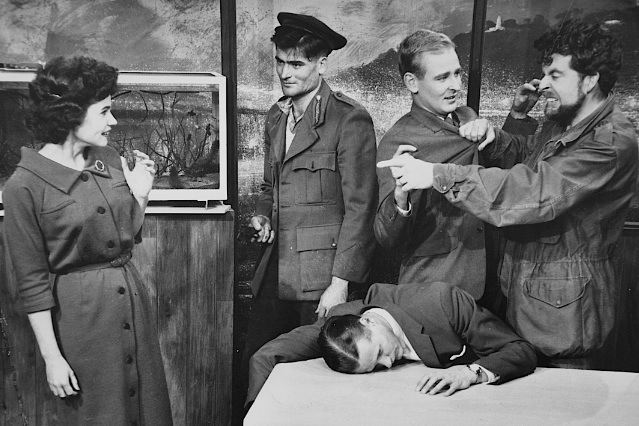
WEEKLY LIVE SHOW PLANNED
Channel 7 is scheduled to start a new local live show next week. A weekly session, it will be the station’s most ambitious project so far. The show is titled Tuesday Date and will be hosted by man-of-many-roles David Farr. It will fill the 9:30 slot on Tuesday evening – temporarily ousting the high-rated Conflict series from the station’s line-up.
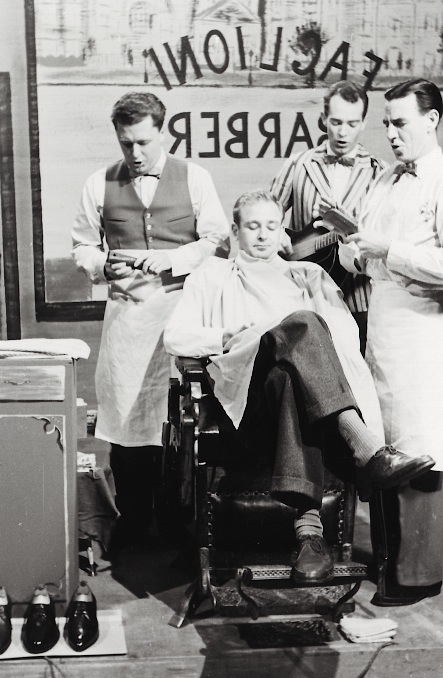
FOOTBALL STARS
Channel 7 will present an unusual group of stars on their first hour-long Tuesday Date next week. The South Fremantle football team will appear on film during the show playing….an 18 led by show compere David Farr.
What’s the connection with a variety show? “We’re not saying” said a coy spokesman this week. “We don’t want to spoil the gag”.
NEW LIVE TV SHOW GETS OFF TO A GOOD START
Tuesday Date, TVW’s first regular live variety show since Spotlight, had many good moments last night, but there are still edges to be smoothed. However, with a few more runs Tuesday Date should be one to keep.
One of its chief faults last night seemed to be a preoccupation with turning compere David Farr into a Perth counterpart of Melbourne TV personality Graham Kennedy. There were a lot of the Kennedy touches, even including an exchange with the producer in the control booth. However, Farr, while showing promise, is yet no Kennedy. Last night he was given his head far too much.
On the credit side, there were some excellent spots. The speeded-up film of Farr training for his football match, and then playing South Fremantle single-handed in a whirlwind sequence, was amusing. It had a Chaplinesque quality. Other spots like Farr miming ads to the voice of Geoff Walker clicked too.
STATE FOOTBALL TEAM ON TV SHOW TONIGHT
The State football team will appear on TVW’s Tuesday Date at 9:30 o’clock tonight. In last week’s film, compere David Farr was shown running wild in a one-man victory over South Fremantle. After the film had been shown, East Perth and State coach Jack Sheedy rang TVW to ask if the station would clear Farr to East Perth. TVW countered by inviting the State team to the studio.
And the shows kept rolling on with the press reporting :
CAVALCADE
TVW’s Oriental cavalcade last night was first rate television entertainment. With a wealth of professional talent from a touring stage company to call on, TVW7 made much of its opportunity. Cavalcade skipped through an hour of bright variety.
Compere David Farr wisely gave a brief introduction and then let the acts speak for themselves.
QUIZ GAME
TVW will introduce quiz shows to Perth television in its regular Tuesday Date programme starting next week. In a noughts-and-crosses quiz contestants will try to answer subjects pegged on a noughts and crosses board. The hour long show, TVW’s most ambitious yet, will include variety at an easy pace. David Farr will compere. The show is also looking for a Girl Friday to work with Farr.
DOUBLE
TVW will double the prize money in its noughts-and-crosses quiz on Tuesday Date tonight and the winner will stay as defending champion next week. Michael Cole will again be the star of tonight’s programme. Compere David Farr will also be assisted by show regulars Rolf Harris, The Rythm Spinners and the Max Bostock Quartet.
By this stage though, after 2 years in the public eye the publicity spotlight was well and truly creating an invasive and unwanted influence on David’s life. He much preferred the fun and anonymity of radio which he had enjoyed at 6PM.
What finally triggered his career change was a visit to the toilet when at the drive-in theatre with Deanne. Standing at the urinal minding his own business, a little boy next to him called out, “Look Dad, it’s David Farr”. Storming back to the car he said to Deanne, “That’s it. I can’t even have a bloody pee in privacy!!!!”
Following on talks with TVW management he engineered a career change to the sales department, with the object of working through to a management position.
But the press were still interested in him :
NOT FARR-GONE
Channel 7 has been harried by calls from viewers concerned about the welfare of former announcer David Farr. Seven has been asked if Farr (a) has been fired, (b) has incurable leukemia (c) cancer.
The truth : Farr is in good health, is on annual leave, and will be married within a few months. At his own request he has been transferred to an off-screen job in the sales department, but may be heard or seen occasionally, mainly on commercials.
I WAS SICK OF BEING ON TV
WHY DAVID FARR WOULD RATHER SELL TV THAN GATHER FANS
We asked David Farr: “Why aren’t we seeing more of you on TV, considering that you’re still popular with the public”. David’s answer was quick and frank : “I was sick of being on camera”, he replied. We talked with David at his desk in the airy, modern sales office of Seven’s studios at Tuart Hill.
This was a David that few viewers know – a quiet, thoughtful David, who prefers his television from the viewing end. We were prompted to question David because his popularity has not waned, though he has virtually been off camera for seven months. He has been doing no more than read the news once a week and give an occasional commercial.
However, requests for signed autographs of him continue to arrive at Seven, outnumbered only by those for Lloyd Lawson.
David used to compere Teenbeat, conduct Televisit interviews, appear on the now defunct Tuesday Date and do a host of commercials. Now, one suspects, he would not appear at all, if he had his way.
“This decision to change to the sales side of television was mine”, he said.
“When I made my reasons clear the channel was with me all the way”.
“There is no private life for a TV personality. I found I could not go anywhere without being recognised. This caused me embarrasment. I felt I had to act the part of David Farr – the TV personality, when all I wanted was to be plain David Farr”.
Even in an off-camera role David was still involved in some on-air work, as reported in part in this press story :
SHOW BRILLIANT – AND FLAT
Channel 7’s new live show Do You Remember was as uneven in tenor as the era it recalled. There were flashes of imagination and even brilliance in its production. In other places it was as flat as the front of a 1920’s dress.
Best moment of comedy in the show was completely unrehearsed. After a free swinging barbershop quartet number (with the Rythm Spinners and David Farr) Farr was so doused with powder and water that he could barely control his mirth in a following commercial.
Promotion came for David in 1961 when he was appointed to the Melbourne office of Channel 7 as TVW’s Victorian representative.
In 1964 David was transferred back to Perth in keeping with the Company’s policy of 3 year terms in this office. With the move back was a return to some part-time on-camera work in addition to his sales responsibilities as Sales Controller.
HOLIDAY MEANS WORK FOR TWO
Gary Carvolth’s Eastern States holiday will bring two familiar faces to greater prominence on Seven.
Former newsreader and personality David Farr will return to on-camera work after an absence of more than three years to compere Seven’s Sunday quiz show at 6:00 pm.
Johnny Young, rock band leader of Johnny and The Strangers, will replace Gary for two weeks as host of Club 7’Teen.
Viewers will remember Farr as a newsreader with TVW7 from its inception in 1959 until 1961. He also compered the live half-hour variety programme Tuesday Date and the teenage programme Teen Beat during those years.
In October 1961, Farr went to Melbourne to look after Seven’s sales office and stayed there until May last year.
DAVID FARR COMES BACK
Most people in the world of entertainment like to bask in the glory of being before the bright lights of TV – but not David Farr. Once a popular on-camera personality at TVW7, he gave it all away three years ago.
David had been the teenage show compere, the host of evening variety shows and afternoon women’s programmes and a newsreader and weather man. He was undoubtedly a popular young man, but in 1961 he requested to be transferred behind the scenes and went to Melbourne as 7’s sales representative.
“I’d always been interested in sales and felt I needed a change”, he explained.
Last year David returned to Perth, still on the sales staff, and a few weeks ago he was persuaded to make an on-camera comeback as host of the Vox Adeon Howard Show. People immediately started writing and calling the studios saying how nice it was to see David Farr back again. But we won’t be seeing much more of him. David said: “It’s fun being back on camera, I can’t deny I enjoy it, but my real work is selling so I won’t have much time for other appearances. I’m still working in the sales department five days a week and we record the show on Saturdays which is the only way I could manage it”.
TV Times asked David why he preferred selling to appearing on-camera. “Most people think that being on TV is a glamorous existence, but it never was to me. I found it put limitations on me. I prefer the sales department because I’m out and about all day and meeting people,” he said.
Anyway, as far as the public is concerned David Farr has made a come-back and everyone seems pleased to see him again.
The Vox Adeon Show has been running for nearly three years and TVW are proud of the fact that it is the longest running locally sponsored show in WA.
In 1970 TVW bought the 6IX Radio Network and because of his previous radio experience, David was appointed Manager of the network.
EXECUTIVE MOVEMENTS
Mr. David Farr has been appointed General Manager of the 6IX Radio Network. Mr.Farr joined TVW Channel 7 in 1959 and moved to the company’s sales staff in 1961. He spent three years in Melbourne as sales representative and since last year has been TVW’s Sales Controller.
GOGGLE-BOX EPIDEMIC START TO BE RECALLED BY TVW 7
Fourteen years ago, WA was hit with its first bout of goggle-box fever – a disease that has run rampant among our citizens ever since. Tonight, TVW7 will celebrate the 14th anniversary of television in the State. With one studio and a staff of four on-air, the new television station transmitted a programme of TV favourites such as Father Knows Best, Sea Hunt and Leave It To Beaver.
The tiny staff had rehearsed solidly for more than a week to ensure the opening went smoothly. According to David Farr, one of the original on-air staff, it did. David is the only one of that group still with Channel 7 and since 1959 he has compered live shows for children and teenagers and run his own variety show.
“In those days, everything was live and if you made a mistake, you made it for the whole world to see”, he said. “Needless to say, there was an awful lot of ad-libbing done while frantic behind-the-scenes searches went on for lost idiot sheets or scripts.”
David spent three years in Melbourne as TVW’s representative of the sales team after he moved out of on-camera work.
Returning to Perth he was made Manager of 6IX after TVW7 bought the radio station.
He has just returned from a trip to America where he spent his time looking at radio station’s ideas and programmes. he says Perth is well up with its US counterparts.
6IX had a programme format of talk and sport, with racing, trotting and greyhound racing descriptions dominating much of its programming hours. A format achieving a steady, lucrative stream of advertising revenue, but one which was not conducive to mainstream survey results. David was able to increase the listener base and during his 5 year tenure at the Network, 6IX topped the audience surveys three times, a seemingly impossible task with its format.
In 1975, David and TVW Managing Director, Jim (later SirJames) Cruthers were not seeing eye-to-eye on programming formats with the eventual result that David was promoted side-ways to another TVW subsiduary which had just secured Australasian manufacturing rights to a revolutionary Japanese process capable of reproducing unlimited size photographic-type enlargements.
EXECUTIVE MOVEMENTS
Mr. David Farr has been appointed National Sales Manager, Group Colour Pty Ltd. He will deal with national sales and marketing for photographic services and NECO (a method of processing giant murals). This position necessitated a transfer to Sydney from where he could service more easily the larger revenue base of the east coast and New Zealand.
After three years in Sydney, David requested a transfer back to Perth. This was denied and so in 1979, after 20 years with the TVW Group, he resigned from the Company and headed back to Perth.
DAVID FARR GOES SOUTH
Prominent media man David Farr, the first man to appear on television in WA, is on the move again.
Farr has been appointed sales and marketing manager for the Golden West Network and will transfer to Bunbury in early December or in the New Year.
A popular media man, Farr has vast experience. He began his career as an on-air personality at TVW7 and transferred to the sales department early in the 1960s. He then went to Melbourne as TVW’s Victorian representative before returning to Perth in a senior sales position.
In 1970 TVW bought 6IX and Farr found himself manager of the network.
When TVW purchased Group Colour and the Neco process in 1975 Farr was appointed national sales manager, a position that saw him transferred to Sydney in order to better facilitate his position.
From Sydney, Farr moved back to Perth to join the Perth office of the Golden West Network, a position he has held working with another top media man, Des McDonald. Now with the move of Ross Elliott from the Network and a small reshuffle taking place, Farr is off to Bunbury.
DAVID’S HAD ENOUGH ON-AIR TV
At 44 years of age David Farr’s hectic on-air television career is just a memory. David was the first on-camera face and voice that launched Channel 7 from a tiny office at the West Australian Newspaper’s building in St. George’s Terrace. “It was primitive and raw, but very exciting”, says David. “I had worked in radio at 6PM for three years after a stint with a stock and station company. My involvement with the theatre and the Festival of Perth led to radio. Radio led to an audition for television. I was in from day one”.
What was David’s first ever television chore? “Reading voice-over news bulletins from that tiny office,” he laughed. “it was very much a case of feeling my way. I had never seen television. But there I was. Front man for the new medium. It was a marvellous challenge.”
Did David specialise in news reading? More laughter. “In those days you did the lot. I read news, weather forecasts, and hosted live variety and teenage pop shows. With a young bloke named Rolf Harris I was also a stand-in children’s show compere.”
David laughed heartily as the memories flooded back. “And of course there were loads of commercials. I did dozens of them”.
Was it fun? “At first it was wonderful. Hard work, but loads of fun. But after a year or so of working on-camera it lost its appeal. It became very hard work. I decided I wanted to get out.”
Out! He wanted to walk away from being Perth’s first television star! Why? “Oh, a number of things. Being recognised wherever I went was annoying and embarrassing. I had enjoyed the anonymity of radio, but television meant the audience knew what I looked like. I didn’t enjoy it at all. I thought about it and decided to ask management if I could work in another area of television. A behind-the-scenes job.”
How did they react? After all, David was their name. “They copped it okay. I went into sales.”
Was his break from working in front of the camera a clean one? “Not entirely. I still compered the Vox Adeon Letterbox Show,” he laughed. Did David’s career stop in the sales department? “No, the Company sent me to Melbourne to work in sales there. I stayed five years before returning to Perth to take over as manager of 6IX, which had become part of the TVW Group. Later I was sent to Sydney by the Company to work for a subsiduary. I didn’t like Sydney and asked for a transfer back to Perth. The transfer was denied. So, after 20 years with TVW I resigned.”
A big step. Forty-one and unemployed. It must have been a very insecure feeling.
“Maybe. But I was back in Perth and happy. I joined the Golden West Network Perth office and later was appointed Sales and Marketing Manager in Bunbury.”
Was it a wrench to leave the big city for a country town? “You’re joking. This is paradise. I’m two minutes from the beach. Two minutes from work and living and working in one of the most progressive towns in WA.”
This report, in part, from TV Magazine in 1988 :
NEWSREADER TO SALES GURU
Ask David Farr about being the first television newsreader in Western Australia and he says only : “That’s going back a long, long time – I used to have hair then.”
It has been almost 30 years ago since TVW7 commenced transmission in Perth and Mr. Farr, now GWN regional sales manager, read the evening news. He was a newsreader for two years before moving into the sales and administration side of the industry.
Mr. Farr, who was born in Narrogin, worked at 6PM for three years then spent the following 20 years with TVW7 before returning to the country eight years ago.
“I love it,” he said. “And I wouldn’t go back to Perth. When I originally joined GWN I thought – What a great idea, I can go down to Bunbury and live a life of semi-retirement in the bush – I can assure you that is not the case.”
By 1990 David had been appointed GWN station manager and not long after that the Company was awarded the commercial satellite radio licence for Western Australia. This licence was to provide a radio service to all areas of the State not receiving an existing commercial service. In a State the size of WA, this was rather a daunting task. In addition to his television duties, David was also appointed Radio Division Manager and given the task of putting the radio service together with a full-time staff of two!
This press report from August 1993 :
RADIO REACHES FAR AND WIDE
If you have recently visited the outback of WA, chances are you would have tuned into Satellite Radio 6FMS. What started as a small radio network in 1990, has grown into a large quality commercial radio broadcast system heard around three-quarters of WA. Radio 6FMS began with five transmitters located at Kununurra, Derby, Broome, Newman and Kalbarri.
The station now sends a signal via satellite to 55 transmitters and nearly 3,000 dish/decoders. The broadcast is heard around the State from Bremer Bay in the south to Argyle in the north. And the signal reaches an audience of more than 90,000 people.
GWN Bunbury station manager and radio division chief David Farr said the radio signal from Perth’s popular PMFM station was brought direct to Bunbury. “Once the signal is here, we automatically delete all of PMFM’s commercial content and insert own own commercial content that is relevant to the area we service,” he said. “The licence allows us to provide a commercial radio service to all areas in WA that didn’t already have a commercial radio service. So while our service is capable of being received right throughout the state, we are not permitted to go into areas where there is an existing commercial station.”
Besides music and talk shows already broadcast on PMFM, Mr. Farr said 6FMS content included aboriginal and local news and weather relevent to the broadcast area. People who tune into 6FMS include those involved in the mining, pastoral,fishing, agricultural and tourism industries. The average listening time to 6FMS is 23.1 hours per week, 4.6 hours more than the WA regional commercial station average.
Two people working full-time and three part-timers are needed to put the service to air. Its signal can be heard on a vast array of frequencies throughout the State on the FM band.
After just on 40 years in the broadcast industry David opted for retirement in 1994. After a hectic business career it was “time to smell the roses.”
This press report from July 1994 :
FARR BRINGS HIS CAREER TO A CLOSE
David Farr has seen a lot of changes in the television and radio industry since he first spoke live to air as a radio announcer for Perth’s 6PM, in 1955. Now, after nearly 40 years in the industry, David has retired to pursue his dream of travelling around Australia without an itinerary, following whatever road takes his fancy, staying in places he’s never been before.
When David started announcing with 6PM you didn’t need qualifications or experience to get the job, just a good voice. He remembers auditioning for the job and starting work virtually straight away as the station’s prime-time announcer. Working prime-time those days meant announcing from 6:00pm to 11:00pm, after which the station closed for the night.
Then television came to WA in 1959 and positions were advertised for on-air announcers with Channel 7, Perth. David applied and was put on the staff payroll. Little did he know that he was to become virtually famous in WA overnight.
Television was already established in Melbourne, in 1956, to coincide with the Olympic Games. The first “official” television broadcast in WA wasn’t until October 16, 1959. But there were a lot of “unofficial” broadcasts, mostly news bulletins and black and white test patterns in the months leading up to the official launch. Wherever electrical goods were sold in Perth, crowds of people gathered to stare at televisions on display and wonder at this modern marvel. And the man they were looking at and listening to was David Farr. David holds the honour of being the first person seen on television in WA.
His job with Channel 7 involved doing just about everything from reading the news and weather, hosting children’s shows, teenage shows, women’s afternoon shows, nightly quiz shows and live commercials. He said it was a wonderful and exciting time to be involved with the television industry. “There was no such thing as tape in those days and very little film to work with so most of what we did had to be done live,” he said. “It was a lot of trial and error and we certainly enjoyed some laughs. And the station certainly got their money’s worth out of me.”
David eventually became tired with that side of the industry. “Having to live constantly in the public eye didn’t really appeal to me that much,” he said. “So I got a job in the sales and administration side of things and ended up working as the manager of our Melbourne office.”
David returned to radio when the company bought 6IX, working in Perth and Sydney.
He joined GWN in 1979, working in its Perth sales office with two others. A year later he was appointed sales manager and moved to GWN headquarters in Bunbury, eventually taking the posts of station manager and radio division chief.
He has seen GWN grow from two television stations in the southwest of WA, with the takeover of stations in Geraldton and Kalgoorlie, the purchase of the Mining Television Network and the launch of satellite transmission throughout WA. He says he’s been very fortunate to have been involved with the growth of radio and television in Australia, particularly with GWN.
“I have had 40 enjoyable years of work and I believe that commercial television and radio in Australia has been remarkably responsible as an industry,” he said. “It performs a great service for the public, though I think people seem to forget every now and then that the service is provided to them free of charge. Sometimes you hear complaints about the commercial content, but if there was no commercial content, you would have had very little television or radio.”
David said he wasn’t surprised that the industry was criticised from time to time. “It gets kicked in the guts, probably more so than a lot of other industries,” he said. “That’s because it’s inside people’s homes, it’s a very personal, integral and intrusive part of their lives.”
He believes the future for television looks very exciting. “But you can only watch so much television at any one time,” he says. “What GWN is all about is providing viewers with the best programmes available – from all three commercial networks. Because we aren’t tied to any one major network we can cherry pick from all three commercial networks. We can get the best package of movies, the best current affairs and the best soaps. GWN viewers are very fortunate in that they get to see the best of all three commercial worlds.”
As for the future of radio, David says there will always be a place in the world for it. “I remember my mother asking me when I joined television if that was the beginning of the end for radio,” he said. “I said, no mum, you are going to be listening to radio for a lot more years yet, and I still believe that to be the case. Radio will always have a part and purpose in people’s lives simply because there are times when people are occupied doing things but they still want to be entertained or informed. They mightn’t be able to watch television at such a time but they can still listen to radio.”
David said he would spend the next 12 months pottering about his house in Bunbury before embarking on his lengthy sojourn around Australia.
When he goes a very special chapter in the book of WA radio and television history will close.
6IX had a remarkably similar beginning to that of TVW Channel 7.
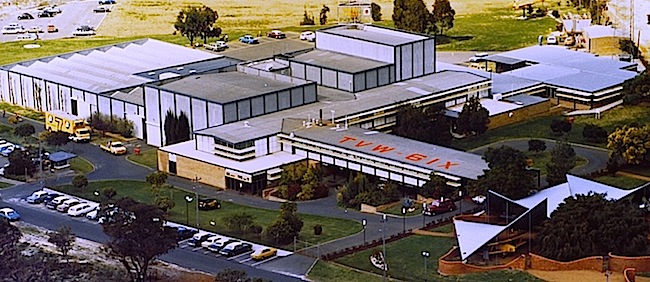
Both were conceived and developed by West Australian Newspapers.
6IX started as a company called WA Broadcasters. It was 50% owned by the Newspaper company. The other 50% belonged to the well known Perth music store Musgroves. Incidentally Musgroves is still going strong in Hay St Perth today. Since the eighties, Musgroves has been owned by the Zenith Music Group.
6IX was officially opened on the 27th November 1933 at its first studios situated above the Musgroves shop.
It became wholly owned by The West in 1963.
The TVW Story, including its beginnings from WA Newspapers, is wonderfully told by Mr Richard Ashton’s pages on this website.
Here is some of the history of The 6IX Radio Network joining TVW Channel 7.
Several years before 6IX and Channel 7 were brought under the same roof, there were working arrangements between them.
Lloyd Lawson ran a radio version of his Tuesday afternoon show “Today” once a week on 6IX, starting in 1963.
In the same year, Eric Walters hosted the 6IX Saturday Night Show.
Johnny Fryer made appearances on Lloyd’s Today Show.
Miss Lynne Wilson, the Canadian lady who was the 6IX midnight to dawn announcer from late 1964, was a regular panellist on Johnny Young’s time at Club 7’Teen.
David Low, in 1968 as well as reading Channel 7 News, he delivered the half hour Midday News Bulletin on 6IX-WB-MD-BY.
In 1969, The Herald and Weekly Times took over W.A. Newspapers. The latter by then owned The West Australian, The Daily News, The Weekend News, The Countryman, other smaller newspapers and of course 6IX with its country radio stations, known as WACN (The WA Country Network). Stations in this group were 6WB Katanning, 6MD Merredin and 6BY Bridgetown.
Because of Government media ownership laws, The Herald Group had to sell their newly acquired Perth radio station. The Herald already owned 3DB Melbourne.
The obvious place for the 6IX Radio Network to go was TVW Ltd.
The official change in ownership took place in July 1970.
Having missed out on buying The Whitford Broadcasting Network, 6PM-AM Perth and Northam with their country stations 6KG Kalgoorlie and 6GE Geraldton, TVW were very happy.
Work on the project began in earnest in 1971.
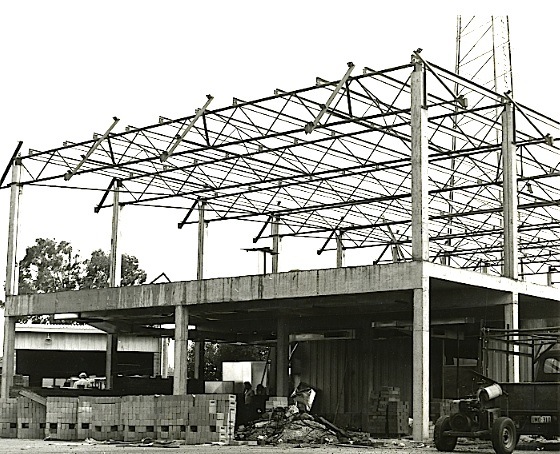
Studios and offices for 6IX were built at the city end of TVW.
Mr John Quick was the chief engineer who was in charge of installing the broadcast equipment into the five new Studios, News Booths, Master Control and a Recording Control Room. The cost being $300.000. A significant amount then.
To prepare, the announcers had to make their way out from the city to the freshly built studios to learn how to operate the new panels on the newly installed desks. At first, announcers complained about the set up,… metal desks, and unable to reach the turntables easily. And there were sliding faders rather than the round knobs they had been used to.
With time all became accustomed.
Even before the complete move from 38 Mounts Bay Road (home for 6IX since 1958) to Tuart Hill, various operations were amalgamated. News and Traffic were the early departments. In fact, in the early days of the new arrangement, some television personnel came to the third floor of Mounts Bay Rd. to work in the Newsroom, occupied by Newsmen including Ted Gook and David White. One such person was journalist Brian Burke.
The first day of broadcasting all our programmes came, I think, in April 1971.
The first announcer to be heard was
Nell Shortland-Jones, followed by Ric Stone, Peter Dean, John Fryer, Leslie Anderson, Peter Barlow, Greg Pearce and Chris Bartlett. Other broadcasters, later heard in the same week included Jan Macafee, our Production Manager Rick Rodgers. This writer was Studio Controller of the Morning Shows.
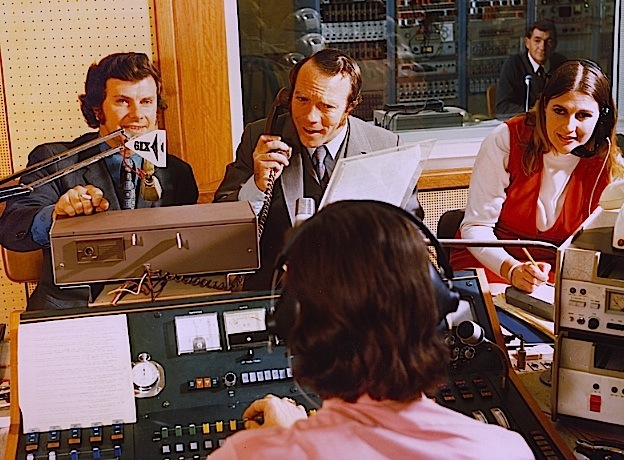
There had been a change in managers.
Mr John Hunn who had managed 6IX since 1963, on the retirement of Mr Bryn Samuel (originally a Musgroves man), decided he did not wish to make the move to Tuart Hill. Of course he did later go there and became an important part of Telethon.
Mr David Farr was our new manager. Familiar to all from his early days reading the Channel 7 News and taking over from Barry Michael (ex 6KY-NA) The Vox Adeon Nicholsons Quiz Show. Before that the radio world knew David from his announcing work on 6PM-AM.
Geometrically he could not have been further from the operations of 6IX. His office was at the top of the stairs at the TVW Reception end. He did a lot of walking!
Another 6IX staff man not to make the transition, was Brian Hayes, Announcer and Studio/Production Manager. Brian moved to Europe before settling in England and became a household name on British radio. The BBC among them. As a talk host he was on first name terms with Prime Ministers and many celebrities.
Our Sales team included Ron Lucas, who later became 6IX Manager.
Gerry Fuller shortly after the move was appointed Sales manager.
Elsewhere here, is a lovely picture of the Traffic Girls all dressed in their blue uniforms with, David Dallimore, previously a long serving 6IX announcer going back to the Musgroves days, with his rich smooth voice, and Ian Haselby. Ian later became a newsreader at the then Packer owned 6PM.
Technical people in Master Control and around the studios included Don Wood (who had been with the station since the 6ML days), Jim Woods, Jim Hobbs, Roy Rees, George High, Dave Adams and Graham Basden.
The Record Library was a busy place, not only for the four radio stations, Channel 7 folk loved having a large supply of music on hand. The library was headed by the late Monty Menhennett (who had compered 6IX breakfast between 1951 and 1959, before Garry Meadows took over, prior to Garry’s first hiring by TVW), Also there were Ruth Elkes (later an announcer on 6PR) and Velia Cometti (wife of Dennis).
By now the sign at the front of the building had been proudly changed with Black Letters on Yellow to
6IX WB MD BY TVW CHANNEL7
All this was before the Official Opening of the new studios.
The Big Day was the 12th August 1971.
It was at 4 o’clock in the afternoon The Lord Mayor (of Tom The Cheap Grocer and Tom’s Other Stores fame), Sir Thomas Wardle officially opened the new Premises.
The whole day was a celebration. But for us a lot of hard work and many weeks of preparation.
On air that day 6IX took the theme of celebrating 40 Years of radio in Western Australia. The day included broadcasting old news bulletins, putting to air voices heard over many years on IX.
Nearly a hundred of the most popular records ever played since 1933 went to air again.
Those who did most of the work on these features were our Programme Director Peter Dean, Music Director (the late) Monty Menhennett and Rick Rodgers.
It was hard work but fun.
Although 6IX was probably more conservative than other commercial radio stations (a lot to do with the great meticulous Mr Stan Gervas, who had retired in 1968 to open Wallpaper World in Newcastle St.), the announcers were not used to having to wear ties and white shirts to work, or the girls having to wear a uniform.
Again, all became used to it in time.
Recounting some of my memories I have from those early days include Peter Dean coming up to me and saying “Mr Treasure wants you on Breakfast. He’s been listening to you at night”.
That, took me by complete surprise and a little aprehension.
Till then I had not even spoken to Brian, but had seen him at the station, heard and read of his achievements, his great abilities, talent and the presence great men have.
But first talking to him in 6IX Studio A one morning, his words and help made me respect him even more.
Doing Breakfast on 6IX was fun. Our programme was mainly a contemporary based Music Show with half hourly News Bulletins, Traffic Reports from 2 of the bright yellow 6IX TVW News vans, a segment at 7.15 with Bernie Kirwan Ward then later with John Rennie (Rambling with Rennie). Believe it or not The Waterside Workers Roster was read out at 5.45.
It was a privilege to work with the newsreaders. They included Clive Robertson, Don Rowe (who was the first to put actual voice inserts in the bulletins), the late Brian Coulter, the late Keith Flanagan, Stuart Joynt, Neil Watson, and Peter Waltham. It was a return to radio for Peter Waltham, having started at 6IX at the age of 18. In 1972 he was reading News both at breakfast on the radio, and in the evening on TV.
The people I worked with were great.
Our Manager Mr David Farr
The ever lively Peter Dean, the talented John Fryer, Monty, the girls: Hilary, Jan, Kerry, Maureen, Trish, Vee and others whose names don’t spring to mind but the faces do!
Naturally Channel 7 was keen to use the “supply” of extra voices that suddenly became available. Not for just on camera work, but voice overs for Ads and Booth Work. I can still remember Ann, who looked after Television Promos and Presentation, searching for me to record the night’s announcements. This was one of my duties after finishing the Breakfast Radio Shift. I was usually in the canteen eating an icecream.
(Booth work was no longer done live by 1972.)
Some great personalities and radio announcers worked at 6IX then.
Of course John Fryer and Peter Dean immediately come to mind with their long lasting highly rated show “Can We Help You”. The Programme had Trish Hancox and Kerry Ryding ably assisting.
Other personalities included the late Alan Robertson who had already made his mark before recruited by 6IX, first as an eighteen year old on 6PM, then 6PR and 6KY-NA, the late Sam Kronja (ex 2UE, 2SM, 2CH, 6PM) who was on IX before he became Channel 7 weatherman, (in a later stint he presented the 6IX Breakfast Show Sam ‘n’ Eggs), Peter Barlow, Roger Gascoigne, Murray Jennings (Formerly of 6PR, RCA Records, an earlier stint at 6IX and later the A.B.C.) and Eoin Cameron (from 6VA Albany).
Sport played an important part in programming.
Football commentaries were headed by Oliver Drake-Brockman and Bob Hicks.
Horse Racing from around Australia, with mid week as well as Saturday meetings covered.
Local races were called by Barry Thomas.
Trotting Races were also broadcast. Our caller was Trevor Jenkins.
In December 1972, I was again approached by Mr Treasure. This time he wanted me to become Assistant Programme Director of the station.
I reluctantly declined.
The family business Zenith Music was growing fast and I needed to spend more time there.
After a lovely farewell to full time work, from the team, I continued to broadcast on 6IX on a part time basis.
It was too good a time to give up all together.
The famous voice of Lionel Lewis returned to 6IX Breakfast briefly. Lionel Lewis had worked at 6IX before, leaving in 1951 to go to the then newest station in town 6KY-NA.
Gary Carvolth became Breakfast announcer on 6IX in March 1973, leaving his TV publicity and promotional work to Norman Hayde.
These thoughts really only take us up to 1973, where Part 1 ends.
I apologise for important names I may have missed, and will make amends in Part 2.
Afterall, the 6IX story in being part of TVW started forty years ago!
Footnote….
The writer of the above is John Cranfield, who joined the 6IX owned country station 6MD in May 1968, moving to IX in April 1969.
He continues to work at Zenith Music, which he owns with his brother Lionel.
John has also remained in radio over these years, having recently returned to 6IX to present a Sunday Morning 1960’s Programme.
To be continued…
There is so much more of the story to tell. 6MD being sold, Terry Willessee coming…and going, the fire, the eastern states consultants moving in, the late Ernie Taylor’s management time, and of course the end of another era when Holmes a Court took over, then the final chapter with TVW when the radio side was sold to Austereo in 1987.
| 3 Days to Go before TVW’s 50th Annversary special. |
|
50 years ago on October 16, 1959 West Australians took part in an historic occasion. A single moment altered forever the way we watched the world. |
 |
|
50 years ago on October 16, 1959 West Australians took part in an historic occasion. A single moment altered forever the way we watched the world. |
